|
Yes, I know...I've been a bad boy. Or at least a poor social media participant. Guilty! But that doesn't mean that I (Evan) don't care. I think I speak for Little Fyodor (and, of course, Mr. Ed Fowler) on this. Those of you who know me recognize that I am a slightly less-than-hopeless Luddite. Anyway... I recently entered the 21st Century with faster internet which made it immensely easier to upload lengthy music tracks online. And thus, I am happy to announce the release of previously un-re-released Walls of Genius material from 1983. Two titles 'complete' the Raw Sewage series, Johnny Rocco and Mars Needs Women. This prompted one of those existential discussions that have both graced and plagued Walls Of Genius from the beginning. That discussion appears below... meanwhile, both titles are streamable and downloadable as wav files from Bandcamp:
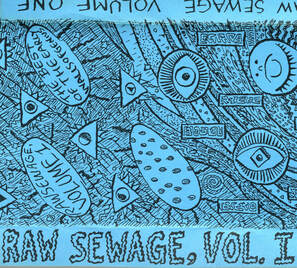
Back in 2004, Little Fyodor set about re-issuing a pair of 1985 Walls Of Genius titles, “Raw Sewage” volumes 1 and 2. The 1985 Raw Sewage series were themselves re-issues of material from 1983, before there was a Walls Of Genius per se. The track "Johnny Rocco" was, and still is, credited to the group "Ed'n'Evan", a fine example of what went on at Ed's place after numerous drinks and bong hits. (Original cassette cover appears to the left) When Little Fyodor re-issued those first Raw Sewage titles, he experienced some preference in "WoG consumer-land" for the original releases as opposed to compilations. How this might apply to online releases as opposed to physical releases, nobody really knew then (2004) and certainly not now either, and he didn’t speculate any further. Unknown to me until reported by Little Fyodor in late 2021, he experienced some rejection of the reconfigured releases from listeners who discovered they wouldn't be getting the "original" release.
Which begs the question...Re-issue versus original? The question had never come up with me, so I had not bothered to ever consider it. When Little Fyodor re-issued re-formatted versions of the “Raw Sewage” cassettes, we never even discussed it. But it is a fascinating conundrum (for those few of us who care) and worthy of discussion. We had compiled two “Raw Sewage” cassettes back in the day, so even those “original” releases were re-releases of earlier material. The Raw Sewage versions that Little Fyodor digitized and released in 2004, Vol 1 and Vol 2, on CDR, were not identical to the original Raw Sewage cassettes. Little Fyodor had made editorial decisions to include certain tracks and delete others. I found his judgment in such matters, as usual, sound. But why prefer an ‘original release’ to a re-released compilation? Firstly, if you were a fan of something many years ago and now that something has become again available, you’d like to hear it as you remembered it. Of course, memory is often unreliable. As a child, I regarded “The Lucy Show” and “The Beverly Hillbillies” as hilarious while now, fifty or more years later, thirty seconds of either makes me cringe. The first time I saw Neil Young in concert (1976), it was a revelatory experience on acid. Seeing him again in 2013 was just disappointing by comparison. So if someone remembered the early cassette releases of Walls Of Genius from 1983 and wanted to experience that music as it was released at the time, that’s entirely understandable. (It is all available at the WoG Archive on haltapes.com) On the other hand, all creators have a vested interest in the quality of material they have released and often look back with dismay at material that we no longer feel is as strong as our best efforts. A friend of mine once gave me a cassette of his early material (Basement Tapes, right!). Later, he wanted me to give it back as his work became more sophisticated. Fat chance! Once you give it away, it’s out there like angry words you cannot un-speak. But a lucky few can go back and edit the material. WoG's original cassettes, as released, are still out there in the world (and many are available on-line, more about that later). At the moment of creation, in 1983 for Walls Of Genius, we were in love with almost everything we did. But even those early cassettes were compiled from a larger pile of material, not all of it deemed appropriate for release to our public. Or simply put, not good enough, perhaps cringe inducing. This from a bunch of self ordained ministers of the absurd, a band that never shied away from making a listener cringe. What could possibly make us cringe? Like anybody, we could recognize our best material. 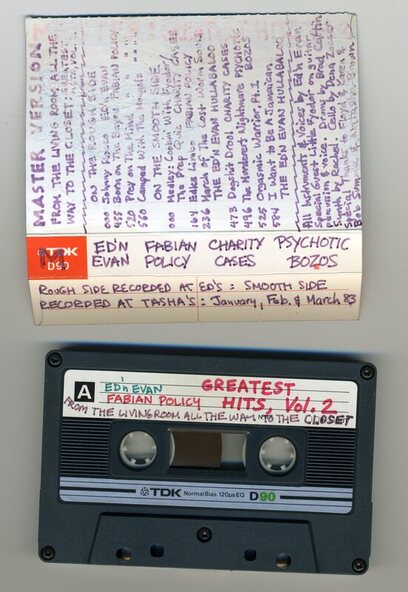
To the right is the "original master cassette" of what was later called "Johnny Rocco". Below you will find the original "Dirt Clods" cassette.
Clearly the original titles in their complete configurations are more authentic, genuine or whatever, loyal both to the times and the people involved. Speaking of the times, we were releasing hour-and-a-half collections of almost everything we had. As for the online titles on bandcamp, the original releases are all there in-situ back through “the white cassette”, including the full “Ludovico Treatment” and “Crazed To The Core”. The hour-and-a-half programs ended up getting “albumized” as double-CDRs. This is not a problem online, because you can have as long a program as you like. Prior to the “white cassette”, there were 13 Walls of Genius cassettes, two of which were Architects Office titles, two of which were Rumours Of Marriage collections (the band that featured Evan Cantor and Ed Fowler prior to WoG) and one of which was “The WoG Sampler”, yet another re-release of earlier unreleased material, leaving 7 bonafide Walls Of Genius cassette titles. Why not simply release them all online in situ, as they were originally? Looking back with dismay is not necessarily the only reason to re-formulate the programs. The reasons ‘why not’ are the other considerations.
When most album releases in the 80s were averaging about 40 minutes or so per vinyl platter, we were doing 90-minute cassette programs. It’s because we had the material, we were clearly in love with it and we could. The 90-minute cassettes weren’t significantly more expensive than the 60-minute tapes and, as I recall, 30-minute tapes were either rare and not so easy to find or we thought the program too short. The first cassette collections (“the Dirt Clods” tape and “From The Livingroom All The Way To The Closet, Vol 2”, see image above) were just a way to assemble what we had recorded partying in the living room. As we coalesced into Walls Of Genius, we simply kept on with the 90-minute tapes. Later on, I discovered that I could get 45-minute cassettes by mail-order and when we changed to that format, we enjoyed a great deal more success in our efforts. It was obvious that listeners preferred 45-minute cassettes to 90-minute ones. It is arguably easier to digest 45 minutes of Walls Of Genius than 90. We returned to the 90-minute format for the Madness compilations because there was such an enormous response. So—when making new music in the 21st century, we have limited ourselves to the CDR album-size time limit, up to about 1 hour of music or less. It’s a ‘convention’ only because no hard copy releases are being made available. We’re not attempting mass home production like we did with cassettes in the 80s. Are we old and tired? Maybe. I wouldn't deny it.
Adhering to this convention, we found the individual tracks ‘Johnny Rocco’ and ‘Mars Needs Women’ too long to include on the three 'new' Raw Sewage releases. Both were clearly worthy of re-release into the world as were a few extra tracks that never made it on to volumes 1,2, and 3. So the release of these two titles and those extra tracks could have been effectively titled volumes 4 and 5 of “Raw Sewage”. But I felt that it would more easily identify the two additional volumes by giving them the eponymous titles of the lengthy title tracks. 
Another question worth answering is this: with 5 volumes of re-released material, why not just digitize entirely those 7 bonafide original titles? One reason ‘why not’ is that a fair number of the tracks from those 7 early programs had already been released on ‘Raw Sewage’ one, two and three. Presumably it was the strongest material from that period. My notes from 2016 indicated the two really long pieces with a few choice tracks still worthy of re-release. Then there is editorial discipline. Seven 90-minute programs have been boiled down to five 60-minute (or less) programs. This is some serious quality control! We had almost NO discipline in 1983, although we thought we did. So both of the new titles, “Johnny Rocco” and “Mars Needs Women” include those longer pieces, plus a few other tracks that were outstanding.
Ultimately I find this a question of ‘how can you please everybody’? Well, you can’t, never could and never will. It should be obvious by now that Walls Of Genius was ‘equally loved and reviled’ during the 1980’s heyday of the cassette culture. Should we worry about whether or not these re-releases will please an originalist? I would point the originalist to Haltapes.com, where a completist Walls Of Genius archive (courtesy of Hal McGee) includes every title in its original configuration.
1 Comment
Whew...finally! "Madness Lives" is now available for download on Bandcamp! (https://wallsofgenius.bandcamp.com) Don't ask me why I digitized "Son Of Madness" first, there's no rational answer, things just worked out that way. But "Madness Lives" was just as good. In fact, it was so good that it inspired the sequel. So in true Stars Wars tradition, I digitized and posted the sequel prior to the original. The story of the Madness compilations has been told in detail at www.HalTapes.com on the Walls Of Genius archive, thanks to a lot of hard work by Hal McGee (http://www.haltapes.com/walls-of-genius.html) I don't wish to cause ear fatigue, so I will recapitulate briefly here for those who haven't heard the tale, for those who were there, and for those who aren't sick of hearing my voice. There we were, back in 1985, Little Fyodor and I were living in the Hall Of Genius on 19th Street in old north downtown, back when working stiffs like us could actually afford to live in downtown Boulder. Almost. We were pushing it. But we were young and motivated. We had already gotten a start with the underground in 1983, recording in Ed Fowler's living-room. Later on, Little Fyodor helped me out with rent at the Eldorado Springs house before I got kicked out. At the house on 19th Street, he and I set up the living-room as a recording studio. We started pushing Walls Of Genius on the Cassette Culture Underground. We recorded relentlessly and released new material on a nearly monthly basis. We sent out catalogs every few months with humorous tongue-in-cheek material and lists of our latest releases. Not only did we desire ever-more reviews from the 'zines covering this underground scene, we wanted, like unhinged Rodney Dangerfields, respect. All while trying to fool that world into believing there really was an experimental music scene in Boulder, Colorado, by recording as a different band every time we turned on the Dokorder. Everybody caught on to the joke eventually and that's when we officially became "Walls Of Genius". It was amazing that such a scene existed and we wanted at least thirty-five-minutes of fame, if not more. One of the ways of disseminating your music to a wider audience was to send submissions to compilation tapes and everybody was doing it. "Madness Lives" was by no means the first of its kind. There had already been many comps and Walls Of Genius had happily submitted a number of tracks. By the summer of 1985, we felt that we had enough connections through the snail-mail network to put together what we envisioned as a 'tour-de-force', a compilation that would cover the whole scene. The word went out via a Walls Of Genius catalog, "The Gift Of The Geek", that featured the releases of what would subsequently be two of our most successful titles, "Before...and After" and "the mysterious case of Pussy Lust". The solicitation begged for psychological nakedness, promising the "most intense sort of insanity". We had been already been called the 'new sound terrorists of America' by one reviewer and we wanted our compilation to fit the same mold. And fit it did. The response was overwhelming, so much so that a sequel was required to cover all the material we received. "Madness Lives", the first installment of the series, features 31 classic tracks from the mid-80s Cassette Culture in a wide variety of styles and includes a number of folks currently appearing in Electronic Cottage.
This is just a sample of the cassette submissions for "Madness Lives"... it was all done by snail mail in those days.
Whew... it's taken me several tries to figure this out. Two lessons for posting to a Weebly page: first, save everything you do as you go along, so that it doesn't all disappear the first time you make a mistake. Two, when Weebly invites you to "drag" an item to the page, DON't do it. Keep clicking until it brings up menus from which you can choose items stored on your desktop. What is it with these software designers? Are they all insane? Okay, enough of that. So I'm up to speed (maybe) on how to post to Weebly, something I was curious about for a long time anyway, and Hal (gently) goaded me into going there. "Wanted: El Jefe Loco" is old news, but in order to make it through the learning process, I had to have something to post, right? So here is the story of "El Jefe", which prompts discussion of one of the most perplexing conundrums (at least to me) in all things Walls Of Genius. Nearly two years ago, Little Fyodor and I hatched a plan for the 'next' Walls Of Genius album project. We would revisit the so-called 'successful formula' of our most successful recordings, a formula that evolved to perfection with 1986's "Before...And After". That formula consisted of material that was 2/3rds solo work and 1/3rd ensemble. 1/3rd would be me solo (Evan Cantor), 1/3rd Little Fyodor solo and 1/3rd ensemble sessions with the three of us (me, Fyo & Ed Fowler). I started recording pieces piecemeal, so to speak, a little at a time. After a year had passed, I had assembled enough material to fill an entire album. During that period, 'Red Ed' had hardly touched his collection of guitars and ukuleles, complaining of stiff finger syndrome stemming from arthritis. At the same time, Little Fyodor was cooking up, or at least dreaming consciously or unconsciously of, his pithy ballads (see the previous post), not to mention the fabulous video for his new version of "Trump Loves You". Whether he was working on all this or just contemplating and dreaming of it, he hadn't produced anything for Walls Of Genius. No guilt or blame, he just hadn't been on the Walls Of Genius track. But I had and I had produced an album's worth of material. So I decided to release it through the auspices of Walls Of Genius. This forced me to look the greatest WoG conundrum of all time square in the face: Without Little Fyodor's participation, could it even be Walls Of Genius? Ed, Little Fyodor and I have all long referred to Walls Of Genius as "our old band". After re-igniting the WoG flame in 2014, we all still refer to "our" band and, truly, it is that, for all three of us. But as the self-anointed "Head Moron", I had long felt that I had some proprietary interest in Walls Of Genius, that it was, indeed, "my" band. I had started it, it was my vision made manifest, I promoted it and produced it. Through the circumstances of time, for a while, it became Little Fyodor's band. Because I abandoned it for so long, believing that nobody would ever give a damn about it. I've said it before. I was wrong! The conundrum reared its head with "Wanted: El Jefe Loco". Why didn't I release it simply as Evan Cantor? When we re-ignited the Walls Of Genius flame in 2014, I saw it not only as an opportunity to re-ignite my interest in experimentation, but also to have an extant venue for it. Since I had always felt that proprietary interest in WoG, I felt I could do as I pleased with it, and it could consist of whatever participants I chose. I envisioned the opportunity to do whatever I damn well pleased, which was, of course, the original idea back in '82. This did not mean that anybody, much less Little Fyodor, would be kicked out of the band. I feel the same about the three core members of WoG as I had in 1986 when I dis-banded WoG. It couldn't be Walls Of Genius without Little Fyodor and Ed. But here I was, in 2018, with a full album's worth of off-the-wall material in hand and nothing from either Ed or Little Fyodor. So I came up with the compromise that Walls Of Genius, as a so-called label, would release this material. As the once self-anointed Head Moron, I went with El Jefe Loco. It is both not-WoG and WoG at the same time. Any of this material would have been right at home on any Walls Of Genius title. For instance, I had the idea of arranging Elgar's Processional (think graduation ceremonies) in its original incarnation as a patriotic British anthem and pairing it with a waltz arrangement of "Anarchy In The U.K.". This led me to exploring the origins of "The Star Spangled Banner", which turned out to be such a silly song that simply singing it seemed like something Walls Of Genius would do. (I have included that piece as an mp3 at the head of this article) Still, is it Walls Of Genius? The silk-and-gravel dichotomy that worked so well for Ella Fitzgerald and Louis Armstrong was also a signature feature at work in Walls Of Genius. All of the Walls Of Genius titles primarily feature the dichotomy or tension created by the offsetting of my and Little Fyodor's material and approaches. The combination of our voices on unhinged cover tunes is a specific example of how this dichotomy works. I would still like to apply this approach some time in the future to the Disney schmaltz-fest "It's A Small World". It is accurate to recall that the origin of Little Fyodor's approach and persona was incubated by Walls Of Genius in the 1980s. He had recorded earlier (as John Leningrad), so it's not like Walls Of Genius invented him. But WoG gave him the opportunity to explore the persona, to give flesh to this avatar for the person otherwise known by the name his parents bestowed upon him. A lot of this has been discussed in the WoG Archive on the HalTapes website. Ed fondly remembers the day we handed Little Fyodor a lyric sheet for the Alice Cooper song "I'm Eighteen" and instructed him to sing. "We created a monster," Ed chuckles. The truth is that Little Fyodor was already in the process of creation at that time. As Little Fyodor emerged, I created alternate personas for me and Ed, part and parcel of the tongue-in-cheek promotion of WoG in the 1980s. Neither "Joe Colorado" nor "Red Ed" possessed the long-lasting life of Little Fyodor. So Walls Of Genius in the 21st Century begs for the best of Little Fyodor's songs. They are simply not available the way they were in the 1980s. Little Fyodor doesn't need Walls Of Genius in order to be, to have a venue for or to promote his own work. He is a successful phenomenon unto himself. I can only hope that at some time in the future, he will once again turn his attentions to Walls Of Genius. As it was and as it shall be again, it ain't Walls Of Genius without him.
posted by Little Fyodor
It's not a very DIY project, but in case anyone here's interested, here is the new Little Fyodor EP, "Pithy Romantic Ballads," as posted on Bandcamp: Pithy Romantic Ballads, by Little Fyodor.
Here's a little anecdote. When I posted the "event" on Facebook, it defaulted to me posting via the Walls Of Genius FB page without my realizing it till it was kinda too late to start over. So it went out to people saying the event was posted by Walls Of Genius. Not what I wanted it to say, but again, not worth starting over again over as people had already responded by the time I realized the error. After the show (last night), somebody whom I don't know by name posted that they thought it was going to be a Walls Of Genius reunion, but oh well, it was good anyway (or something to that effect)....
I should probably also mention that the lead off song, "Trump Loves You", was originally done as part of a Walls Of Genius jam recorded with Hal and released by Walls Of Genius on the No Surviving Humanity, um, release.... Back in the 80s, when Walls Of Genius was in it's so-called 'hey-day', our fellow avant-garde and experimental musicians were always amazed that Little Fyodor and I were both such enthusiasts for wilderness activity: hiking, backpacking, camping and all that. It seemed as if underground music was perceived by its practitioners as an exclusively urban pursuit. We did occasionally set up microphones outdoors, but that was only in the backyard, to capture the sounds of South Boulder Creek at the Eldorado Springs house. So, yeah, most music of any kind, really, is an urban pursuit. Once in a blue moon you hear of an orchestra recorded at the bottom of the Grand Canyon, but it doesn't happen very often. The truth is that neither Fyodor nor I had moved to Colorado with the intention of making avant-garde music. We came to Colorado for the mountains and the associated outdoor sport. The music was something that developed over time.
Fast Forward to 2019 and the outdoor wild is still a passion for both of us. We came west primarily for the mountains, but an added bonus, of which we were unaware at the time, was the southern Utah canyonlands. This is a part of the country that has an almost fanatic fan-base and is currently embroiled in national monument controversy, as well as suffering the degrading onslaught of industrial tourism. Back in the 80s, it was an empty quarter and we both quickly discovered this incredible landscape, falling in love, like so many others in the wake of Edward Abbey's "The Monkey Wrench Gang", with redrock canyons. If the controversy and/or the landscape interests you, the Canyon Country Zephyr is the place to check in (www.canyoncountryzephyr.com). This particular image comes from a photograph I took underneath Tower Arch, what was in the 1990s a quiet corner of Arches National Park. I'm not sure there are any quiet corners of this park anymore. Arches is now so popular and crowded that they're talking about instituting a permit system simply for access. You'd have to make a reservation just to get in! Among other things, I hope this painting reflects why so many people might want that access. It's a truly incredible landscape, but sharing an arch like this with a noisy crowd is very different than having it to yourself on a dry balmy desert afternoon. You might ask why is this this image being posted to Electronic Cottage? After all, it's not mail-art, nor is it a socially relevant collage. Neither is it avant-garde, digital, weird, 'out-there' or experimental in any way. It's a traditional, nearly impressionistic or fauvist landscape oil painting. It's relevance to Electronic Cottage is that I painted it while listening to the Racket Fest #2 in its entirety, from beginning to end. It must have been just the right inspiration, because this painting came fast and easy. It was completed in less than 3 hours, needing no tweaks after the initial notan (sketch), underpainting and fine adjustments. I enjoyed the Racket Fest, amazed by all the fascinating and psychedelic sounds made by this eclectic collection of musicians and I was pleased by the results of my effort as well. You can see more paintings in this vein at my website: www.evancantor.com Thanks for taking a look!
Walls Of Genius' 1986 compilation of Cassette Culture artists,
"Son Of Madness", is now available on Bandcamp: https://wallsofgenius.bandcamp.com/
When we put out the call for "Madness Lives" in our catalog "The Gift Of The Geek" (approx. March 1985), we had no idea that the response would be so enthusiastic that a sequel would be warranted. But that was in fact the case.
Some of the materials were out-takes from the first go-round. We were sent more material than we could use for each artist and wanted to include as many artists as a 90-minute cassette would hold. We requested that artists limit themselves to 5 minutes. "Restrictions (were) limited to questions of recording quality (we're not super finicky) and content (we're partial to peculiar stuff...)". We asked contributors to not "be afraid to go psychologically naked for this project, let it hang down to your knees and, above all, to take effective measures to unleash your inhibitions." The response from the Cassette Culture was a tsunami of fascinating and diverse material, from sound collage to demented rock'n'roll.
Why "Son Of Madness" now? Why not the original "Madness Lives" first? That's just a quirk of circumstance. In the course of conversation I discovered that Little Fyodor had already digitized almost all of Walls Of Genius' titles at his end, so I asked him if I could get copies of "Son" and "Live Improvisations". I started checking out his digitized version of "Son" and one thing led to another. So, eventually, of course, "Madness Lives" will also be available via Bandcamp, but for the moment, only "Son Of Madness" appears on the Bandcamp site (along with other WoG titles).
The most comprehensive discussion of all the tracks on "Son" appears on Hal McGee's website, haltapes.com, in the Walls Of Genius archive section:
http://www.haltapes.com/wog-0030-son-of-madness.html Briefly, thirty different artists each have a track. I've broken the 90-minute cassette into volumes one & two for convenience because that's a lot of tracks! Some of the artists are just Walls Of Genius in different incarnations. Cowtown is Walls Of Genius backing up Cowtown's only actual member, punk dee-jay Peter Tonks. Wally Bob Colorado is WoG's own Head Moron putting on his cowboy hat. Meichenbaub was the teenage brainchild of one of our Boulder pals, Bob O'Connor. Russ Stevens, imploring us to "slap the buttocks", was one of the original Dirt Clods from the proto-Walls Of Genius period in Ed Fowler's living room.
Many others were stalwarts of the scene, like Problemist, from Unsound's
William Davenport. Dino DiMuro gives us the first of two Hitler related pieces, while the salacious Roberta Eklund gives us the second. The prolific Don Campau appears, as does Schlafengarten (a Psyclones associated group), Minóy, Smersh, Tom Furgas, Ken Clinger, Booed Usic (a/k/a tENTATIVELY ... a cONVENIENCE), John Wiggins, and Master/Slave Relationship (Debbie Jaffe of Viscera and Cause & Effect). Others were artists getting airplay on Little Fyodor's radio program "Under The Floorboards", Johnny J. & The Diversatones for one. All of the artists on the comp represent individuals who had either received our catalog or knew somebody who had. Some of those artists remain quite mysterious to this very day.
In any case, "Son Of Madness" is a real tour through the classic 80s Cassette Culture scene and is filled to the brim with gems every bit as worthy as those found on the original "Madness Lives". We here in WoG-land hope you enjoy!
(by Evan Cantor and Little Fyodor) When Hal McGee started gathering Walls Of Genius materials in 2012, I (Evan Cantor) had been out of the underground loop for over 30 years. In the years following Walls Of Genius’ 1986 dissolution, I was unaware of how current Little Fyodor had kept the flame burning. I truly thought nobody would ever give a damn about Walls Of Genius. I've said this many times and I'll say it again: I'm glad I was wrong. But why should anyone give a damn? Walls Of Genius, ostensibly an avant-garde music ensemble, was a prominent participant in the 1980s Cassette Culture. We pursued and experimented with a wide variety of musical styles, everything from lengthy psychedelic improvisations, free-jazz, punk-rock, lovingly crafted, uninhibited and manic deconstructions of pop, jazz and country-western standards to poetic ravings, recitations, musique concrète, industrial noise and sound collage. Walls Of Genius was reviled and loved in equal measure by the Cassette Culture. For instance, an Unsound magazine review of one release (Before ...and After) indicated "Simply Genius...the new sound terrorists of America". In a later edition, another review (The Mysterious Case Of Pussy Lust) was not as impressed: "This is music made by zealous fans who want to imitate, not by musicians who want to create and be original". You may well imagine our disagreement with that. Walls Of Genius was active from 1982-1985 (the 'classic' period) and subsequently revived in 2014. As both a live-performing and studio-recording band, as well as a cassette-album "label", we released over 30 titles of our own and others' music in the mid-1980s. We were featured on numerous compilations and issued two of our own, Madness Lives and Son Of Madness, representations of the best that the Cassette Culture had to offer. As Electronic Cottage is the direct descendent of the Cassette Culture of the 1980s, in fact existed in its first incarnation at that time, it is relevant to review the music of Walls Of Genius for insight into the overall network of underground artists participating. Because Walls Of Genius bridged as many gaps as possible in the differing underground scenes at the time, our music represents the many different perspectives noted two paragraphs above. We worked across the board, dismissing nothing, deconstructing broadly and experimenting, mostly successfully, with everything. It was truly gratifying that, in 2012, Hal McGee contacted the former members of Walls Of Genius, interviewed us and collected materials for a comprehensive archival collection on his haltapes.com website. This revival of interest led to a Walls Of Genius reunion session, which in turn led to the revival of the group in 2014 as an active concern. Where to start with the archive? The Main Page will give you an idea of what is here, a table of contents at: http://www.haltapes.com/walls-of-genius.html Check out Walls Of Genius' most popular and best-received release, Before…And After. Writing for the Allmusic.com website in the 90's, pop music professor Richie Unterberger claimed it was our only release that "truly hit the mark" and deemed it "ripe for excavation on CD reissue by some company that doesn't mind losing money for art's sake". (No one has yet taken him up on this idea, can't imagine why….) You'll find a link to Before …And After on a page listing all of their cassette releases (click link or pic below): Walls Of Genius - a survey of their cassette releases On that page click on each cassette title and you will go to dedicated pages for each cassette, where you can stream all the music from Walls Of Genius' 'classic' period. Each cassette release page features in-depth recollections and analysis by the two primary movers of the group, Evan Cantor and Little Fyodor. These two haven't always seen eye-to-eye about these things and like so much seen through the filter of memory, their recollections don't always match, but they always illuminate. A favorite of both was Crazed To The Core, the ultimate foray into the bat-shit bonkers, screaming, hollering, psychologically naked, takes-the-piss-out-of-everything side of what we did. So you may alternately want to start there (click on link or tape cover above). There’s a lot more than just the cassette releases here. There’s a rare video from 1985 of Walls Of Genius performing live in concert in a room beneath the bleachers at University of Colorado’s Folsom Field. Evan’s Walls Of Genius scrapbook is reproduced in full, filled to the brim with images and artwork, much of it never before seen elsewhere, collected all in one place. There are interviews discussing the times, places and influences relevant to the music as well as a page dedicated to the wacky snail-mail-art catalogs generated by Walls Of Genius to market their work in the pre-digital era. Additional pages focus on the instruments used, the recording gear and the Walls Of Genius band-house itself, the "Hall Of Genius". Yet another potential starting point for exploring the archive would be the very beginning. If you think you have what it takes, the gumption and the granular fortitude to plow through this entire dense resource, start with The Dirt Clods (1983), the so-called proto-WoG cassette that arguably started it all. Then you can proceed tape-by-tape, taking in the full story. Not only did Electronic Cottage's own Leslie Singer (Girls On Fire) do just that, she enjoyed it, to boot! Proof that it can be done. This process is made easy by links to the next tape on each page. Whether or not you believe that Walls Of Genius matters, we think it's damn good story. Both Cantor and Fyodor dove headfirst into the project, providing all the music, art and memories that Hal McGee had requested. It's possible that we overwhelmed him, but he rose to the task and created a thing of beauty (at least to those who think it matters). Little Fyodor muses that if Hal McGee thinks this matters, then readers of Electronic Cottage should also, essentially asking the question: "What would Hal listen to?" Even if you don’t care about "us" specifically, the entire voyage constitutes a microcosm of the human condition. You might see yourself in there. So! The HalTapes Walls Of Genius archive
is a comprehensive and lovingly-constructed collection of everything you could ever want to know about these seminal do-it-yourselfers. In the America of the 1980s, a time strangely relevant to our own, these guys attempted to crush, mutilate and take waffle-stompers to society's norms through the power of music. That they succeeded in their mission is why Walls Of Genius matters, then and now. by Little Fyodor Yes, you know what apeshitness you're going to get with a Little Fyodor show, but if you look closely, you can catch some variations.... I'm gonna follow up on Evan's post, in which he makes some assertions that I don't dispute about the limits and ultimate recursiveness and paradox of going apeshit bonkers till you can't get any more apeshit bonkers. I certainly agree that such a goal can only go so far as an end unto itself -- hell, look what it did to GG Allin!!! Within Evan's declamation he contends that "you know what you’re going to get at a Little Fyodor performance. He may be 'out-of-the-box' by definition, but he’s not busting the envelope anymore simply by being Little Fyodor." Again, I don't dispute that, yet there's often more than one way to look at the same phenomenon, and since a picture's worth a thousand words and y'all should be the ultimate judge (and I feel like showing off), I offer the following examples of my "Dance of the Salted Slug," which climaxes most every Little Fyodor & Babushka performance, so much so that I once was going to leave it out (I had forgotten the backing track!), and the audience called for my blood were I not to exhibit it somehow!! And yet at the same time, well... I said I would leave it to you and so I shall! I'll only add that one of the things I missed most about Walls Of Genius was being able to dance and prance about while not having to worry about fronting or carrying the band as I'm inevitably required to with my solo material. I guess I took all of that side of what I liked to do and squeezed it into this Dance. We don't use the backing track anymore, and I'm surprised and disappointed to only find one good example of that version online, but here's a few examples from over the years, including one at Hal's 50th birthday party....
by Evan Cantor
Walls Of Genius did many things, but the single most unique and defining element of the band was the three of us going bat-shit bonkers. This resulted not only in a lot of freewheeling improvisation, but a good deal of screaming, hollering and weirdness, all discipline abandoned. Self-consciousness was thrown out the window, self-indulgence embraced. Noise, cacophony, sounds of all kinds and dissonance gleefully explored, even over-done. When we solicited contributions to a compilation of the leading cassette artists of the mid-1980s, we specifically requested that participants not “be afraid to go psychologically naked, (to) let it hang down to your knees and, above all, take effective measures to unleash your inhibitions.” I went further and admonished participants to give us the “most intense sort of insanity, be it dark or delightful.” We called it Madness Lives. We wanted the participants to embrace, as Leslie Singer (Girls On Fire) has called it, their personal “bonkers”. Whatever happened to mine?
Let’s acknowledge that the 1980s were a different time, a long time ago, as far away from 2018 as a Star Wars galaxy. We were almost forty years younger, meaning that the parts of our brains governing rational thought had only just matured very recently, if at all. So we were, like so many young people, highly charged over the things we felt strongly about. For me, there were two over-riding elements in my life that prodded me into going bonkers. One was my frustrated experience with the business of music itself and two was frustrated sexual or romantic ambitions.
No doubt another motivating factor was watching the liberal developments of the 1960s and 70s get washed down the drain by resurgent regressive conservatism (i.e. Reagan). This is not to claim that there isn’t reason enough today to respond energetically to resurgent regressive conservatism. There’s just as much crap as ever. But my response as a 20-something to Reagan/Bush was different from my response as a 60-something to Trump and his America. It’s not that age necessarily mellows one about these things. The things are equally, or more, objectionable than ever.
Walls Of Genius has taken on Trump specifically with a number of pieces, including Little Fyodor’s unhinged and angry “Man Of Instinct” and my own satiric faux-mariachi song “Make America Mexican Again” (both on the WoG title All Trumped Up, 2017). But in the bigger picture of letting one’s marbles slide, roll and rebound, the same crazed perspective on our overall society is not the same as it once was. I’m still a smartass, just not an unhinged one.
To be honest, the seeds of my own willingness to shed inhibition via craziness were already there, just waiting to be watered. The proof is in a recording made in the Spring of 1981 with Kevin Landes (formerly of Washington D.C.’s Young Turds and a future member of The French Are From Hell) playing one of his pieces on an upright piano. It’s interesting to note that L’Enfant Suckling was an imagined band that only had one session, not unlike the many one offs that eventually turned into Walls Of Genius a few years later. Towards the end of this short piece, you can hear me raving extemporaneously in the back-ground, “I’ll kill him, I’ll beat him...” accompanied by the pounding sounds of the imagined beating. As the demo ends, Kevin asks “Have you lost your mind?” Perhaps I had, but I wasn’t yet ready to do so on a regular basis.
As for the business of music, as a young man, there was one thing I really wanted to do in this world and that was to be a musician. By the time Walls Of Genius coalesced, I had played in numerous bands pursuing numerous styles. One had dissolved in crazed misplaced recriminations over band politics (Long Lost Friend), another fell apart with accusations of my being ‘childish’ (Blitz Bunnies). I dropped out of college to play in another, a band that worked like the devil for months, played one concert and promptly fell to pieces (Dreamer Easy). I kept going, though. After college, I played in a group that started making money (Folk Grass Blues Band). We all worked construction by day, lived in a band house, and did our gigs at night. But still, it dissolved, again into misunderstandings and acrimony. At least this time, nobody was angry with me. In Colorado, I helped form a new wave band that promptly fell into more misplaced recriminations and accusations (Rumours Of Marriage). By that time, I had had it. I concluded that musicians were the weirdest and most difficult bunch of mercurial idiots I had ever known. I wasn’t particularly happy about the people who booked the venues, either. Liars, frauds, cheats, self-aggrandizing ass-holes arrayed in all directions like airborne Whack-A-Moles. Sick of charismatic leaders losing their shit and destroying all the work done by their fellow musicians, I decided to just chuck it. It was 1982 and I had a day-job and music had never paid the rent anyway.
Chucking it meant heading to Ed Fowler’s place on the weekends, drinking copiously and sucking on the bong, watching the Broncos, win-or-lose and jamming in the living room. We were both avatars of the “so-bad-its-good” aesthetic. Years before the world discovered and celebrated the cheesy wonder of the Great William Shatner, Ed had records (lps) of Telly Savalas, Shatner, Leonard Nimoy and plenty of others who thought to turn their fame into music in the wild-and-woolly 1960s. He even possessed a recording of Gene Tracy’s version of “The Great Crepitation Contest”, a/k/a “Battle At Thunderblow”, a farting contest between Lord Windesmear and Paul Boomer. This would have us rolling on the floor with delight. “It’s a triple flutter blast!” We thought we were pretty hip because not only had we seen Plan 9 From Outer Space, we had also seen Glen Or Glenda and were conversant in John Waters’ movies from the years before he went Hollywood (Desperate Living, et al). We hadn’t yet heard The Shaggs, but we were very impressed with the naïve foolishness (and overblown self-importance) of Savalas, Shatner and company, not to mention Wild Man Fischer, who was the real thing, sans self-importance. So we were well prepared for silliness and abandon.
On top of this, we were geeks. You’d think that since we were in a band, we must have been getting a lot of action, what with all the groupies, right? The truth is that Walls Of Genius wasn’t particularly sexy. A lot of people thought that Little Fyodor and I were a gay couple, which didn’t help. I myself was in the midst of a multiple-year drought. Yes, there had been some opportunities, but being a nice guy (and a geek), I didn’t want to take advantage of women who were only of interest to me as sex objects. There would have just been more bad feelings and animosity to toss in the pot. ‘Free love’ had been floating around since the 60s, but I never found any that was actually ‘free’. For me, there had always been a price. For some, the price was far higher in the free-wheelin’ coke-fueled 80s. Looking back at the AIDs crises of the 80s, it was, perhaps, a good time to renounce promiscuity. Not that I had renounced it. It was something I just could not locate and the “hook-up” culture was thirty years into the future. It’s not fair for me to speak of others in this regard, but I think it’s safe to say that there wasn’t much happening for any of the three of us, our prospects appeared slim and we were pursuing one of the strangest band projects of all time. So we had plenty of energy and anomie available for railing against society and its norms. Put all of these elements together and, voila!, the boys go bonkers.
And yes, there was Ronald Reagan. Having grown up in the 60s and 70s, I was a member of a generation that thought it had fixed the world. There would be no more war, no more discrimination, no more environmental degradation, we were all so enlightened. Then along came Reagan and the conservative backlash. This energized me to get in a political mode, in ways that Little Fyodor either didn’t understand or simply felt was irrelevant to our music-making. Trump, on the other hand, motivated Little Fyodor at a time when he was questioning his interest in music outside the Little Fyodor model. Ed objected to political content back in the 80s, although today he has morphed into a rabid, mouth-foaming liberal and I’m the one who has mellowed out. Trump? He doesn’t bother me. He’s no good, of course, but I don’t take him personal. Having survived a round with lymphoma, I’m not interested in letting that asshole enter my life in the way of stress.
We had some pretty good opportunities for letting it all hang down, too. Boulder still had a counter-culture vibe in the early 80s. There were even old, famous beatniks in Boulder courtesy of the then-Naropa Institute. I must admit that the old beatniks did not care for Walls Of Genius. Maybe they were stuck on be-bop jazz. But plenty of us were in revolt against the conservatism of old beatnik culture. So what if you had hung out with Jack Kerouac twenty years ago? This is 1984, Man! The future is now! We’re pushing the boundaries, NOW! This very revolt against the generation that “howled”, despite having actually inspired our own, was yet another reason to go bonkers. Going bonkers was itself a statement of cultural independence and a reasoned response to cultural stasis.
The battle sometimes took place on the air. During a KGNU fund-raising drive, on-air, an old beatnik who had his own talk show insulted the avant-garde classical show. I had the temerity to respond by making a disparaging remark about the old beatnik’s talk-show, emphasizing different strokes for different folks. That old beatnik regards me with the stink-eye to this very day. But on the other hand, consider the Friday night “Go For It” show on KGNU. You could call in and say almost anything you wished, right on the air. Sitting around on a Friday night in Eldorado Springs, Little Fyodor and I would call “Go For It” and as the weeks rolled by, we got crazier and crazier. I invented an insulting faux-redneck character named Roy Watkins who would ramble on about all the perversions of humanity, Boulderites in particular. I would play autistic screaming versions of Hank Williams and Creedence songs. I would channel “The Voice of God” and admonish Little Fyodor for his sins, mostly something to do with lusting in his heart. It was all in good fun and the timing, after a week of miserable toil at crappy jobs, was perfection itself. Of course, with the advent of YouTube, we could do all this today if we so wished. And therein lies the crux of the matter. Do we so wish?
So why my lack of interest in going bonkers as a reasonable and reasoned response to the madness of today’s world? I had asked myself a similar question years before, upon ending Walls Of Genius in 1986 (it was revived in 2014 with Now Not Then). The problem with going bonkers is how far will you, or can you, go? It’s kind of like the workplace exhortation that you should “exceed expectations”. How many times can you exceed expectations before that exception becomes the expectation itself? So, going bonkers. How crazed can you be before it becomes the “new normal”? Walls Of Genius established itself as a group going beyond-the-norms, unleashing our ids, dismantling our inhibitions and destroying them. Using what chops we had in the service of going ape-shit.
It worked and it was fun. And, lo-and-behold, people responded positively to it. Well, not everybody. But enough to keep us going, at least for a while. Another question concerns the material to be explored, dissected and deconstructed. In the mid-80s, the music with which the three of us had grown up was sufficiently fresh enough in collective memory that the exploration was relevant. Exploring (and exploding) that material in 2018 is a different proposition. I have already expounded via a previous ramble on the various reasons for why I am mostly unaware of “new” music. So it’s a limited audience who would understand bonkerizations of classic rock. Of course, it was a limited audience in 1984 as well, but at least it was relevant to that limited audience and, through live performance and local media, there was a small overlap into the world of the normals. Thusly, our commentary was made known and available to the very society we were spoofing.
The truth is that I am no longer motivated to go ape-shit. Like the revived Walls Of Genius title of 2014 indicated, that was then and this is now.
I don’t seem to have much of the ape-shit left in me anymore. Maybe Little Fyodor does, although having perfected his shtick, going ape-shit doesn’t seem to be on the menu. He certainly performs with a lack of inhibition, but you know what you’re going to get at a Little Fyodor performance. He may be “out-of-the-box” by definition, but he’s not busting the envelope anymore simply by being Little Fyodor. Ed is only running wild with his traditional Coors Light in the living room, still refusing to sing and barely touching his instruments due to terrible arthritis. And me, oh sure, I’m still a smartass wisenheimer. But a lot of those things that I did back in the 80s, well, they happened and that was that. I’m glad they happened and I’m proud of the work we produced, but there’s just no way I can hope to channel the same energy that I had then. I can only channel what energy I might have now. I’m no longer an angry young man, mad at the world, sexually frustrated, freshly ticked off and pissed off at society. After 62 revolutions around the sun, I have accepted that society is fucked-up beyond repair and that, at best, human beings are a flawed experiment. At worst, we are the planet’s most dangerously destructive animal. If there’s a God, we are His or Her’s biggest mistake. I have no great expectation that the world is going to be a better place in the future than it is now or was in the past. Anything that I or Walls Of Genius might have to say about it will be heard by only a precious few and while it’s a good thing to do your best to make the world a better place, I have no illusions that my opinion counts for much in that regard. The world keeps turning despite our best efforts and will only be the same fucked-up place it always was, albeit with more technological devices stuffed into our hands. I don’t mean to say that there’s nothing good in the world. There’s plenty of good and I know where to find it. But still, the absurdities that energized me to go bonkers forty years ago no longer do. More power to those of you who still have it.
A lot of what we did in Walls of Genius was improvised, either partly or in full, essentially creating something out of thin air much of the time. Sometimes it was live on stage, other times right in the so-called studio. Even when we were doing “songs”, we would often launch into lengthy improvisations related to the song structures only by virtue of (usually) staying in the same key. How is this done and can anybody do it? Well, it’s not necessarily easy to explain and as for the second question, it’s sort of yes-and-no. I’ve known many musicians who are uncomfortable with improvisation, especially where no previous song structure exists. They apparently require (or prefer) a structure to support the whole, as opposed to creating that structure on the fly. For the structural approach, think Miles Davis’ cool-jazz period, where the band improvised on extended song structures. For the unstructured, start-from-scratch approach, consider his electric years when he quite often showed up in the studio with two chords written on a paper bag and set the musicians on ‘play’. There’s nothing better or worse with either approach and at Walls of Genius we pursued both quite gleefully. Note the example below, a live version of the Alice Cooper song “I’m Eighteen”. The improvisatory section, while remaining in key, takes off from the song structure into a crazed chant. It’s nice to know the structure of a song and have the chops to play it, but I’m not talking about live jukeboxes churning out note-for-note covers for wedding receptions. If you’ve got the chops and discipline to do that, more power to you, but I know that I would find it boring. The only way I can understand how a musician could possibly enjoy playing in a “tribute band”, churning out note-for-note covers of somebody else’s music, is to liken it to classical music. The classical musician, in an orchestra or string quartet, is playing the music verbatim from sheet music, note-for-note. That’s a tough nut for me. I like putting my own spin on things. In fact, it’s hard for me not to put my own spin on things. It’s always fun to learn a song correctly and it’s even more fun to do it “my way”. Improvisation lets you go further. That’s where you get a chance to go exploring. Starting your adventure from scratch, however, you will find something magical and different in the creation of something out of nothing. A note here, a note there, some rhythm added and a new piece is spontaneously created. If it’s “on tape” (or was the result of particular combinations of riffs in the first place) it can be re-created. But if not, even if it’s a complete and total “one-off”, there it is, on tape, recorded for posterity. Listen to Hal McGee’s collages of daily life—they are all improvised one-offs, not designed to be re-created. With my improvisatory band, Strange New Worlds, we took it to the far limit, never playing the same thing twice. We would set up and compose from scratch every time we played, whether in the studio or on the stage. We didn’t even discuss what we were aiming for or where we wanted to go with it. Our only plan was to start messing around until something jelled and it almost always did. Without recording technology to capture those bursts of creativity, it would be lost for all time. If we were playing the Burning Man Festival, that might be the point, but we weren’t. Bassist Victor Wooten, in his book “The Music Lesson: A Spiritual Search For Growth Through Music”, articulates so much of what I already believed about improvisation that I would recommend it to anybody who loves making or listening to music. It might be a little airy-fairy for some readers when it comes to his spiritual pronouncements, but there’s a great deal of truth in it, especially for those wishing to pursue improvisation. The italicized passages below are culled from Wooten’s book and provide points of departure for my own reflections. “Music is real, female, and you can have a relationship with her…like one-hand clapping, a one-sided relationship never works.” Of course music is real. We’ve all heard it, so we know that it exists. “Music” (with a capital M), however, is a spiritual concept, a continuum and a channeling of energy. This is not something that can necessarily be measured, but is manifested quite clearly when we say a band or a player is “on” or “hot”. The channeled energy flows like a river through the artist into the audience and back. If the energy (a/k/a “xi” or “chi”) isn’t flowing, the musicians are either incompetent or having an off-night. I couldn’t say whether or not “Music” is female, but I agree that you must have a relationship with it conceptually in order to make it work as effectively as possible. It is a kind of magic, like karma. You only have to put a little bit into it to get a lot back. How do we know this energy exists? Well, we don’t, not really. It’s a metaphysical explanation for a common experience that cannot be fully quantified scientifically. It could simply be the stimulation of adrenaline, endorphins and serotonin. But does it matter? Either way, it’s a physical and mental state sought by both musician and audience. When musicians feel like a “bird in a flock”, a sensation created while a band is “on”, that is not a measurable phenomenon. You could score a band on whether or not they were having a good night or were sluggish, but how would you go about it? What would it mean to grade a band on a scale of 1-to-10, with ten being the best concert ever? Would that score be meaningful? “Guys, we need to up our game, we were only about a 7 tonight…” If anybody told me that, my first instinct would be to tell them it wasn’t my fault and could you just fuck off? But this phenomenon can be experienced. “You should never lose the groove in order to find a note…Once you find the groove, it doesn’t matter what note comes out; it will feel right…You are never more than a half-step away from a ‘right’ note.” I learned this lesson playing the fretless bass. When I worried about hitting the right note at the exact spot on the neck, I couldn’t do it. But when I gave up worrying and just let the groove happen, it didn’t matter if I hit the exact “right” note or not, it sounded just fine. The groove was more important. One of the magic tricks in improvisation is that a “wrong note” is often just an opportunity to go in a new direction. If your music is sufficiently experimental or avant-garde, notes might even be superfluous. Noises or abstract sounds might suffice. What does it mean to only be a half-step away from the ‘right’ note? Well, you can always slide a note up or down to arrive at the so-called correct note. Your audience will think you intended to play it that way. There are other tricks as well. For instance, if you look at the shape of chords on a guitar neck, you may notice that a Bb6-barre shares many of the same notes as a G-minor-7th. If you only play the four highest notes in the chord (strings 1-2-3-4), those chords are identical. One benefit of looking for these kinds of cross-overs is that you can give your fingers a break by abbreviating the chord. Another benefit is that you can make the music richer harmonically. Maybe a Bb6 will fit in that place where the sheet calls for a G-minor-7th . “Repeating the ‘wrong’ note allows the listener to know where it’s going so that it begins to sound ‘right’… it’s a great way to correct mistakes after they’ve already been made… We can’t avoid making mistakes, but we can get comfortable with them.” When you’re performing, you must never stop playing simply because you made a mistake. You have no choice but to play on through and most listeners won’t even notice, especially if you’re comfortable doing so and don’t make an awful face. In an improvisatory context, you may be able to turn the mistake into a fabulous new musical journey. I can’t tell you how many times this happened with Walls of Genius. Artists call these mistakes “happy accidents”. In a song context, if you just keep going, nobody will know you even made a mistake in the first place. Of course, if you are recording, the microphone will hear the error and you will very likely want to correct it in some manner. But when you are practicing or playing live, keep going so that you learn what it feels like to play through a mistake. What happens when you stop in the middle of a song? The energy flow shuts off and you lose both your groove and audience. This once happened to a friend of mine. He had wangled his way into a fabulous venue opening for a famous name act. It could have been a tremendous opportunity for him. Halfway through one of his songs, he stopped and explained that he was recording the concert, had made a mistake and was going to start the song over again. The audience very likely hadn’t noticed anything because they had never heard his songs previously. He didn’t really need to have every song recorded perfectly. So what if one wasn’t perfect? I never heard that recording and he never got that gig again, losing multiple potential connections in the process. God rest his soul, Bob was a tragic victim of his own demons. “A true musician plays Music and uses particular instruments as tools to do so.” Making music does not depend on what instrument you play. Music is not about technique or virtuosity (although that can certainly be an interesting part of it). It is about the larger concept, “Music” the spiritual continuum. As far as my chops are concerned, I am a strong vocalist and can play (well) rhythm guitar, blues harp and the electric bass guitar. I can play lead guitar if I have enough distortion and you don’t mind a kind of crazed punk approach. I can play (middling) the baroque recorder, keyboards, upright bass and percussion. I have played numerous other instruments as well, regardless of how poorly. Put it in front of me and I’ll give it a try. Sometimes only one or two notes is all you need. When I played the saxophone with Leo Goya’s group The Miracle, I didn’t know squat about playing the sax, but I could apply what I knew about “Music” and thus contribute to the free-jazz chaos. When it comes to my vuvuzela (in the colors of the Mexican soccer team), I can make one note. Granted, it’s a loud note and it sounds like a dying hippo. I have not yet used it in a recording… With Walls of Genius, we would try any instrument at hand. Frank Zygmunt once pulled an old warped autoharp from a dumpster and gave it to us. Both Little Fyodor and I managed to make very interesting and spooky music with it. Not that either of us “knew” how to “play” it or bothered to tune the warped old piece-of-crap autoharp. Frank also gave us a big sheet of plastic, very likely a lens for a fluorescent light fixture. We would wave the thing around and make a wonderful “woop woop” sound with it. It wasn’t even a musical instrument in the first place. A lot of the earliest incarnations of WoG were made with children’s toy instruments in Ed Fowler’s apartment. More recently, Ed came to a WoG session with three ukuleles. I thought he must have been practicing the uke, but no, he said that I would have to play them! I had never played the ukulele before. So I looked at his ukulele song book, practiced a few chords. In minutes we were off and running with “All My Loving”. Does that mean that I am one of Wooten’s “true musicians”? Maybe. I’d like to think so. “The bass guitar… is understated and underappreciated, yet it plays the most important role. The bass is the link between harmony and rhythm. It is the foundation of a band. It is what all the other instruments stand upon, but it is rarely recognized as that.” As a bassist myself, I have always known that I was doing more than just holding down the time signature. The bass is continuously laying down a foundation for the harmony and melody, not to mention taking single-note leads since it rarely plays anything resembling a multi-note chord. I suppose it can be overdone, though. When I saw Mr. Wooten in concert, outside his progressive bluegrass context and doing his lead-bass thang, it was a bit over the top. Some restraint and good songs wouldn’t have hurt him. It certainly wouldn’t have hurt him to have taken his own advice. But yeah, I concede the fact that he had the fancy gig and adoring fans, so whatever he was doing must have been right for him. “Imagine if we allowed beginners to jam with professionals on a daily basis. Do you think it would take them twenty years to get good? Absolutely not! It wouldn’t even take them ten. They would be great by the time they were musically four or five years old. Instead, we keep the beginners in the beginning level…There are professionals you can bring here to you… (on CD)” Playing with others is always a learning experience. Wooten asserts that letting beginners play with accomplished players would heighten the learning experience and I agree with him. But this is not always possible and, in many cases, not even desirable, especially to those accomplished players. I use the skiing analogy—if you can whiz down the double-black-diamonds, you’re going to get bored really fast out on the green runs with the novice. A run or two, maybe, but more? Probably not. But beginners, don’t despair. You can use your stereo or computer and play along with anybody you wish. It’s not the same as playing live with better players, but it’s fun and is always a learning experience. With YouTube, you can even see (some of the times) how a musician is playing certain parts. This is why Django Reinhardt was famously nervous about being photographed while he performed. He didn’t want people to see how he did his thing. Nowadays, you can learn, from one source or another, how to play almost anything. But chops are not soul. Learning how to play well with others is the real trick in improvising, both live and/or in the studio. When you’re playing with others, you need to scale back and play less. The more players in the room, the fewer notes each player needs in order to fill the room with music. Five players, all restraining themselves, can create an incredible sound together. Without restraint, the result will usually be cacophony, which is, admittedly, sometimes a desired end. But not always. Most of the time, the players around you will appreciate it if you restrain yourself. I eventually gave up playing with The Miracle because I felt too many players were involved. When we lost George Stone’s jazz piano as a touchstone and lined up as many as six saxophone honkers all in a row, it had morphed from music into cacophony. This didn’t stop Little Fyodor, though, and he kept The Miracle alive through many more sessions, many of which produced credible free jazz and avant-garde music. What if you’re handed a recording that was itself an improvisation and asked to overdub additional parts? I approach this by improvising with the improvisation. I know I’ve found the parts that fit when they sound like they were improvised in the room alongside the original improvisation. The excerpt below began as a percussion track. Inventing a part on the spot, I added bass and then finished up with electric guitar. “The way you play notes causes them to sound different… changing the duration allows your ear to hear and respond differently…” There’s a real difference between playing legato (slow), staccato (pointy) or allegro (fast), for instance. Or cutting a note off abruptly versus letting it ring. Think about the endings of songs, for instance. Even after long improvs, a good solid ending is better than a fadeout. It makes your group sound “tight”, “competent” and “together”, even if the improvisation is itself sloppy. Witness the success of numerous jam bands. Whether you stop a note abruptly or let that note ring makes a difference, but only you can tell which is best in the situation. If you pound on your keyboard, it sounds different than if you tickle the keys. If you finger-pick a G-chord on the guitar, it sounds different than wailing away on the same chord with a heavy plectrum (pick). “Most people play louder to get someone’s attention, but getting quieter can stop a bull from charging… Most artists think the louder they play, the more emotion there is. Actually, it is the other way around. The emotion has to be real when you are not hiding behind loud volume.” Dear Lord, Yes! Most musicians let volume get out of control. Rather than get louder in your effort to communicate your message, take it down and explore the subtle mysteries of minimalism. Can you say more with less? If not, you are limiting yourself as a musician and making it more difficult for other musicians to play with you. “I could tell that the drummer had chops, but the fact that he wasn’t showing them off was impressive…If you don’t play the rests (and) give them the same attention that you give the notes, you’ll rush.” Drummers are notorious for volume, but they’re not the only musicians who chronically overplay. Think of those players who must exhibit every note, every lick or run that they have ever learned, and play them all at once. They think that they must impress the hell out of you (or, in some instances, make you go away). They take up too much space. They are not necessarily egotists, but they have an egotistic or narcissistic approach. Maybe they just don’t know any better. They don’t leave room for other musicians to travel along with them. As a bassist, I learned this lesson intuitively. For one thing, when I started out, I didn’t have the chops that I had later on, so I had no choice but to simplify. Later on, as my facility improved, I could pick-and-choose those passages in which to lay back or step up front. I had to learn it a little more consciously with the blues harp and the guitar, but as soon as I started laying back and stopped showing off with the blues harp or dominating the moment with too much rhythm guitar, my playing jumped up a level, was more rhythmic, and it was more fun as well. “Exercise mind and body control… don’t think about it. Allow it to happen. This is the time for ‘not concentrating’.” What you “intend” to do is different than what you may be “trying” to do. This is basic Yoda-101: “There is no try, there is only do”. For instance, don’t “try” to learn a part or a song, just “do it”. As far as the “not concentrating” is concerned, don’t worry about what you can or cannot do technically. Let it go and go with the flow. Chances are you’ll be learning on the fly and play better than you did previously. “Play me (Music) all you want, but you must know this: it is only when you allow >me< to play >you< that you will know me completely because then we will be one and the same.” This is airy-fairy new-age-speak about getting in “the zone”. All musicians seek that magical experience of letting the energy of the universe flow through them, or into them, or in and out of them, or whatever it is they think is going on when they find themselves in “the zone”. You don’t even need to warm up before a performance if you know how to get there already. Are you confident that this will happen shortly after you begin playing? When I perform, I know where “the zone” is and don’t hardly need any warming up. Not everybody is like that—most people need to get warmed up before they get in “the zone”. If you already know where the zone is, there’s no particular reason that you won’t get there almost instantly. My ability to get in “the zone” is why I almost always sing the first two songs of the first set with my bar band, the CBDs. This is not true for everybody, though, and I’ve always wondered why that was the case. “Don’t try real hard, try real easy. Treat it like a game.” They don’t call it “playing” for nothing. If it isn’t any fun, you shouldn’t be doing it in the first place. If it feels like work, something wrong is going on. In many ways, music is, as Wooten claims, a game or a puzzle. “Play quieter to make (an audience) listen…When you’re playing to an inattentive audience, you and your bandmates are the background noise… you can make them listen without their even knowing it. The best way to do that is through dynamics, or even better, through space. Create silence…Learn how to make a rest speak louder than a note. Play a musical line and start leaving notes out, putting the emphasis on the rest.” Dynamics is about varying the volume and intensity of different parts of a piece, and “space” refers to the empty spaces between notes. Both are essential to making music work effectively. This is, again, about leaving space for both the “Music” and the other musicians. Moments of silence between notes keeps rhythmic parts more well-defined and leaves spaces for other sounds. This is essential in most improvisation. If the music remains at the same volume throughout, it can generate ear-fatigue and eventually become nothing more than background noise or Muzak. Note the predilection of grunge bands to contrast quiet contemplative sections with raging mania from one verse to another. Perhaps they learned this trick from the bombastic classical composers of earlier generations. “(Frogs) listen all right, better than most humans do…Each animal made a sound that somehow supported the other sounds while leaving enough space for all to participate.” Wooten may overstate the ‘ability’ to communicate with animals, especially when a frog hops up onto his knee and a deer rubs her moist nose on his cheek, but animals do listen. I have had numerous conversations with ravens, swallows and swifts in the Utah canyon-lands over the years by mimicking their calls on the baroque recorder. It certainly attracts their attention and they definitely have something to say about it. They don’t seem interested in the blues harp at all. The chorus of frogs that Wooten talks about is a good metaphor for a band context, the leaving of “enough space for all to participate” and listening to one another to find the right places in which to play. “Most musicians seem to reserve their ears for themselves rather than open up their ears to the rest of the band.” This is because most musicians are worried that their playing is insufficient and it’s all they can do to keep up… or they want to show off their fabulous chops. Either way, it is an egotistic and narcissistic mistake not to listen to the rest of the band. Once you open your ears, you are in position to make both yourself and all the other musicians sound better. Not every song needs to feature YOU above all others. When you make the musicians around you sound better without self-aggrandizing grandstanding, you’re really getting it. “Practice while you play so that you can make the most of both…Music should not feel like work. If it does, you know you are going about it the wrong way.” Or make practice play… remember, it should always be fun. You can ‘work’ on stuff without feeling like you’re at ‘work’. If it’s not fun, why would you even bother? I suppose this is easy for me to say. As a hobbyist who dabbles in professional music, I’ve never had to make my living from it. Walls Of Genius certainly kept me busy and at a certain point I became admittedly overwhelmed. But I was never forced to work so hard, promoting and performing endlessly, that music became like a “job” to me. I would advise anybody making music, from the total amateur to the professional, to keep as much “fun” as possible in the picture. When the performer is having fun, the audience is, too. “Music is a part of who you are.” In a way, you are a conduit for “Music”. At its best, it flows through you, energizes you and takes you to ecstatic heights as both a listener and a musician. It must be a part of you always if you are to appreciate it as fully as possible. “When have you ever truthfully said ‘thank you’ to your (instrument of choice)?” This was a new one to me. I had never before “thanked” my bass, my guitar, my harmonicas. But really, they deserve our thanks. We work them really hard when we play them. Some of us maintain them very carefully, cleaning and polishing, changing strings and all that. But thanking them? Hey, it couldn’t hurt. We always thank our audiences, don’t we? Gratitude is a good thing. We wouldn’t even be on stage if there was no audience who wanted to hear musicians getting in the groove. So thank you for reading this… And thank you, Fender Jazz Bass for facilitating a life in “Music”.
|
Archives
January 2022
|
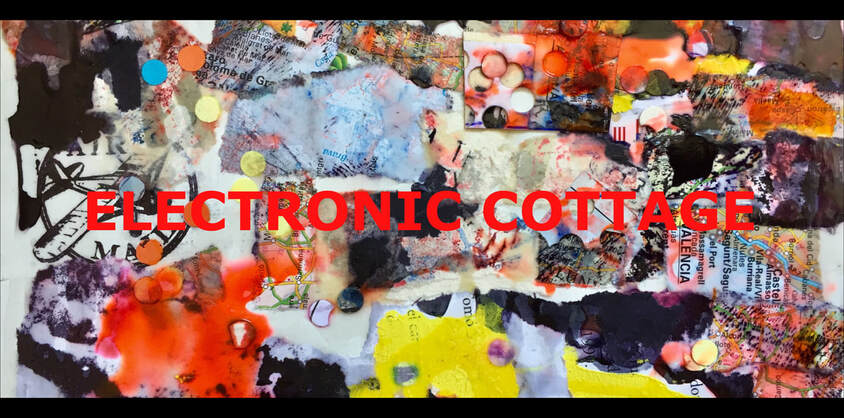
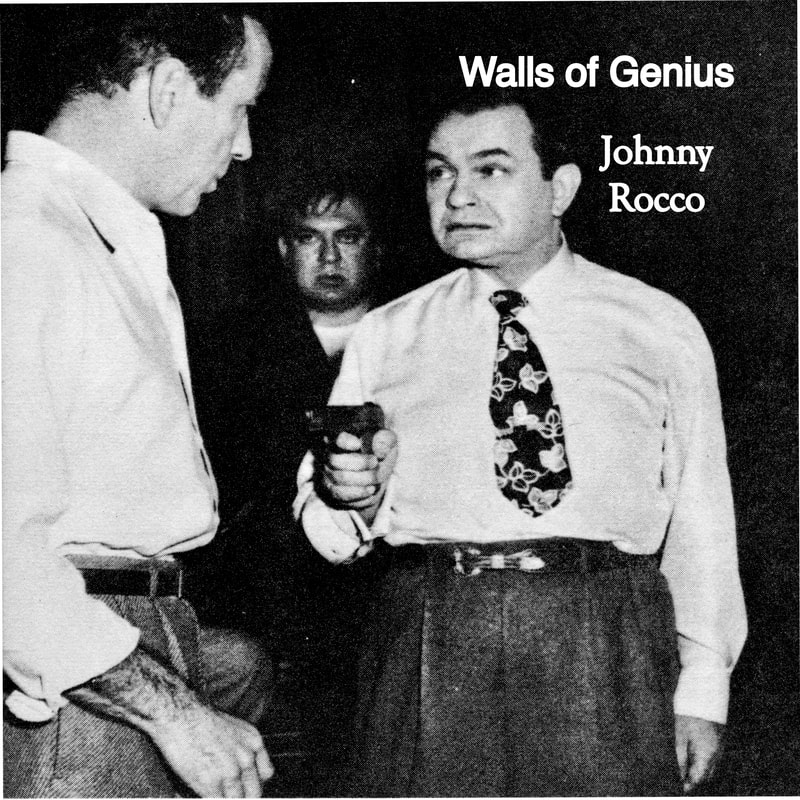
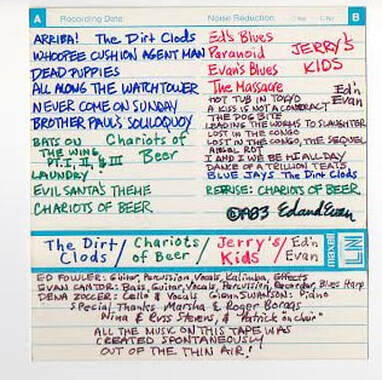
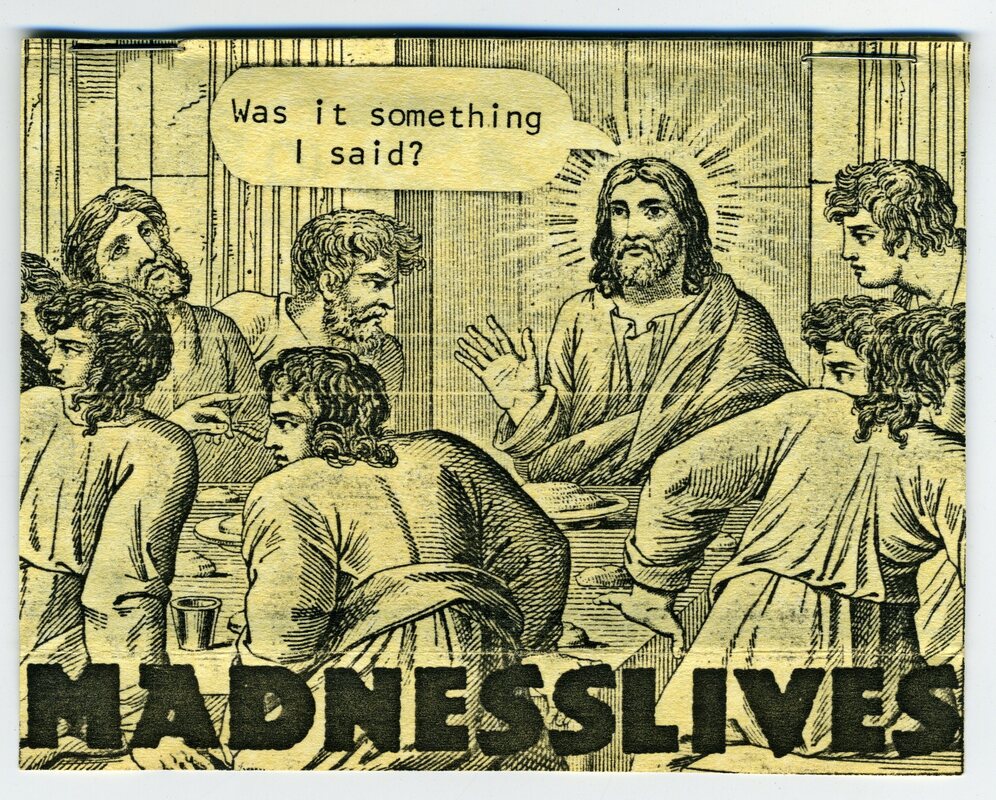




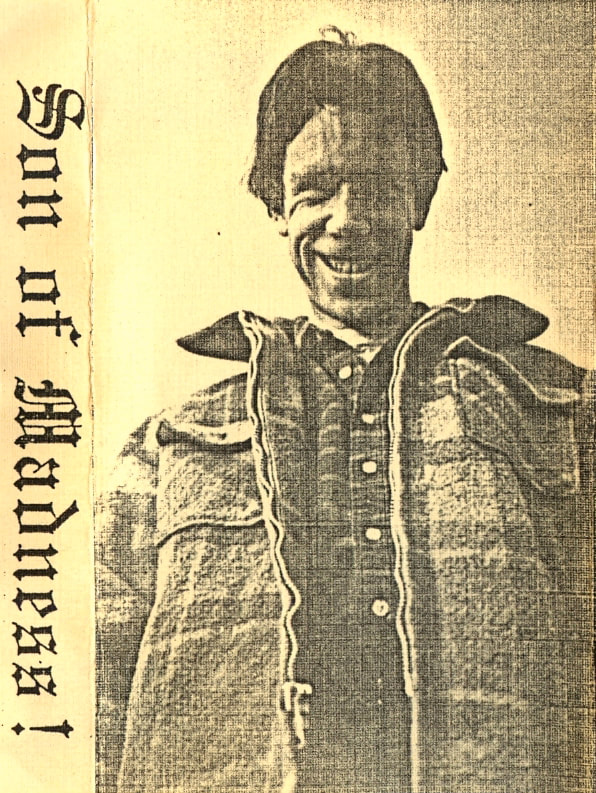

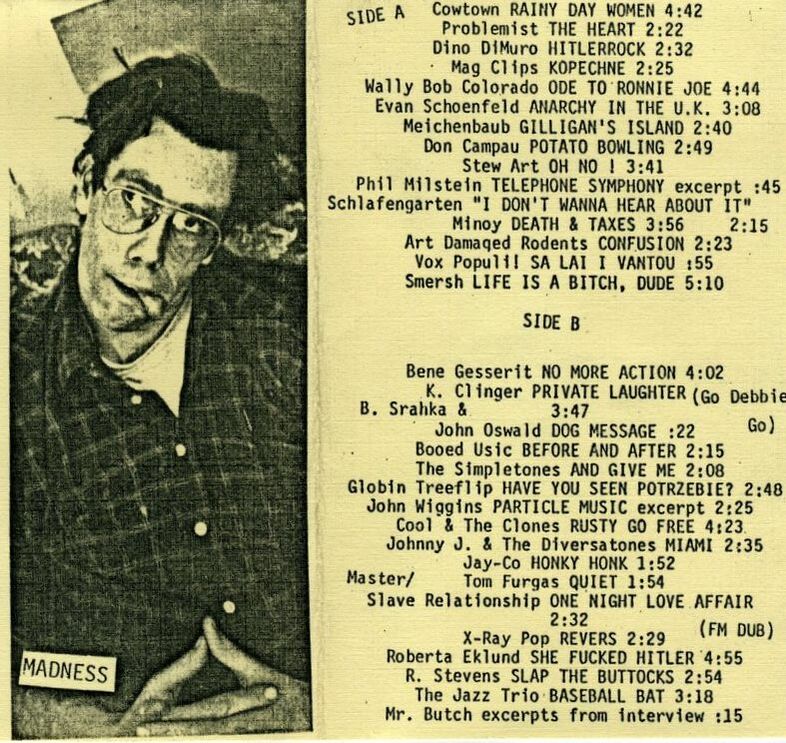
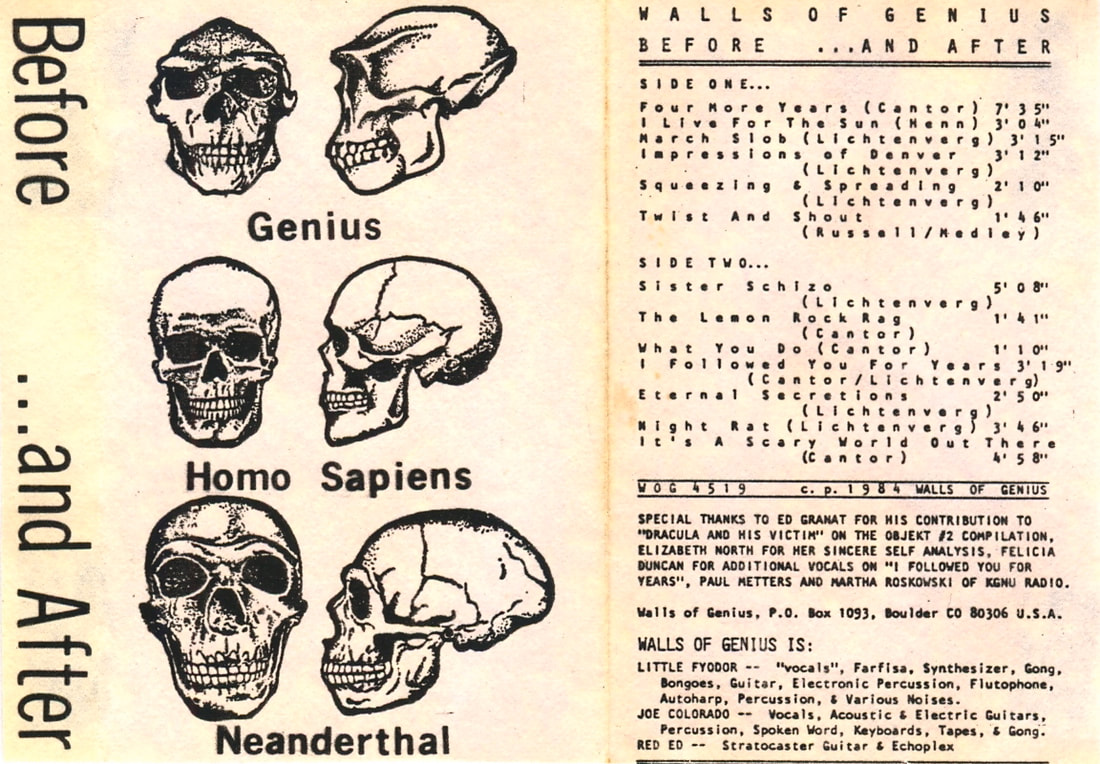
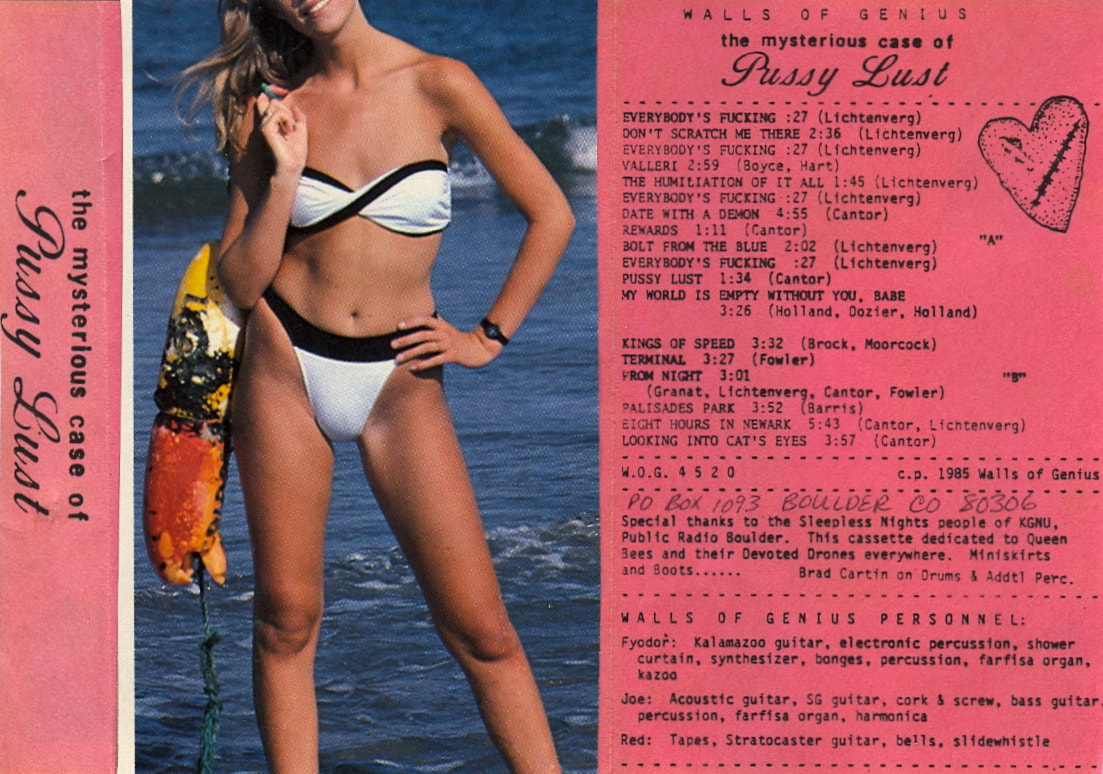

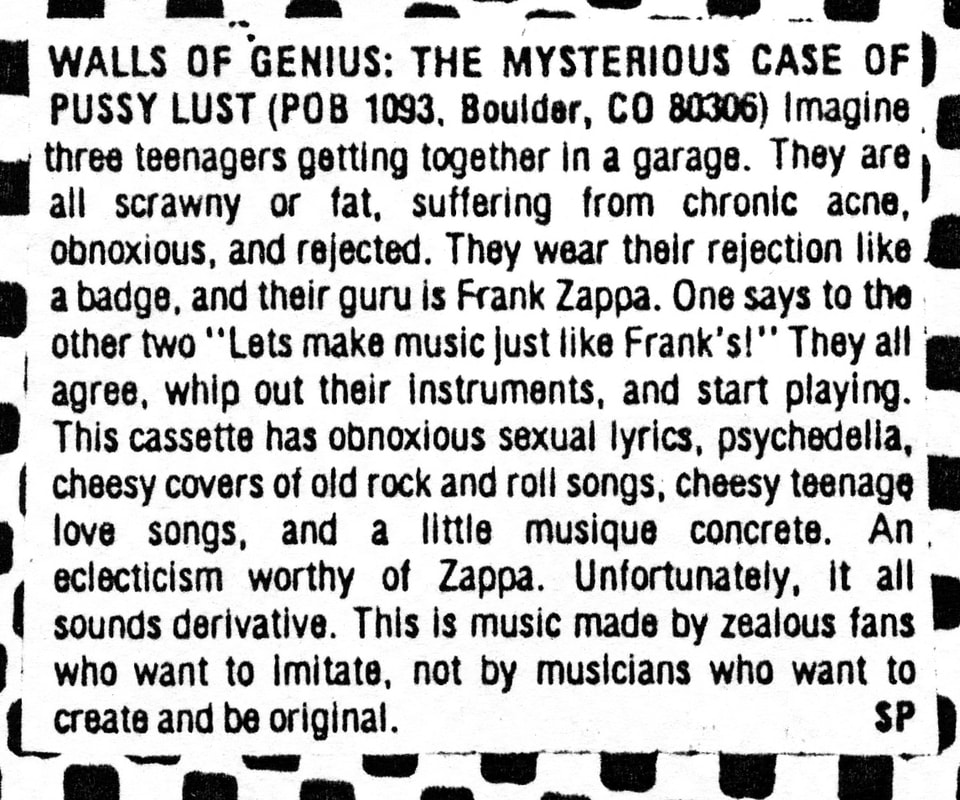
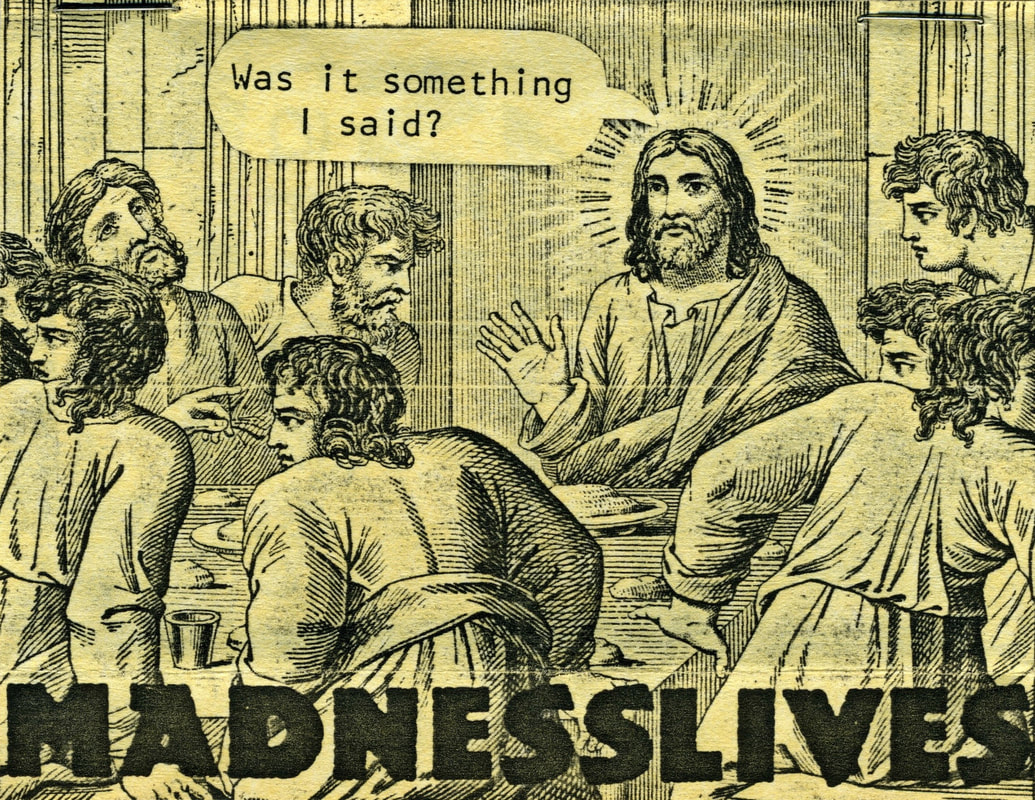
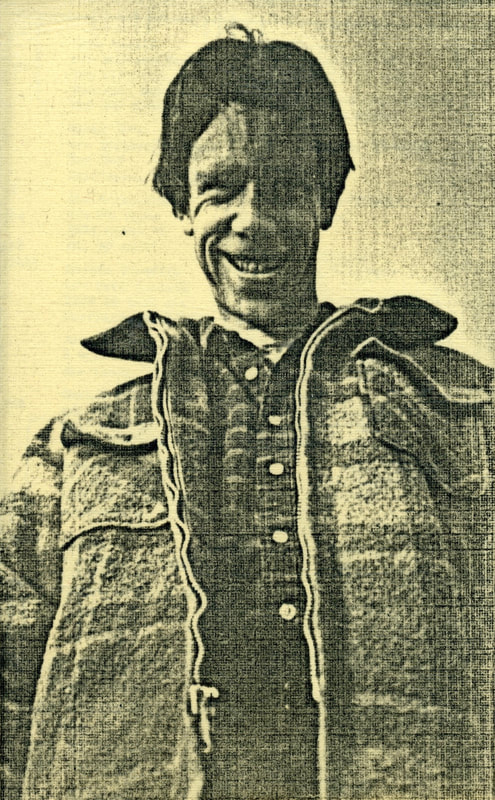
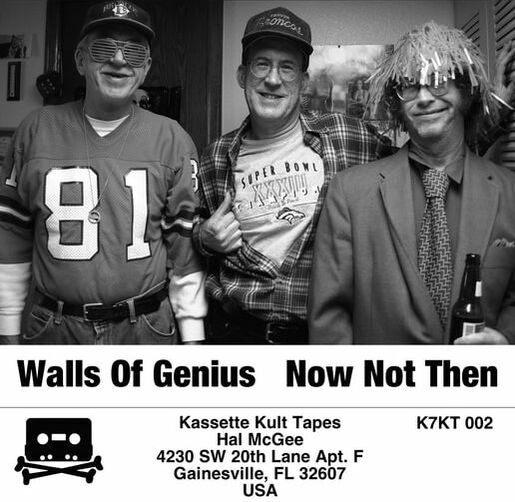
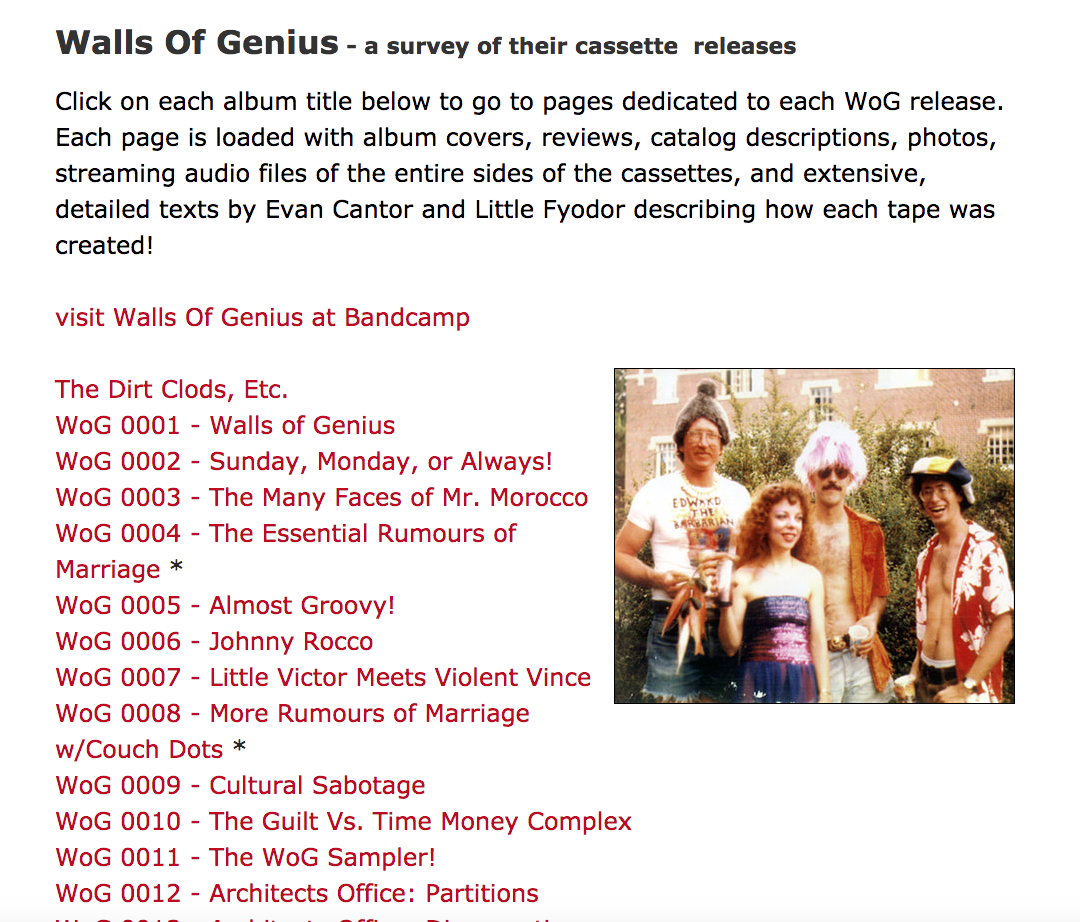

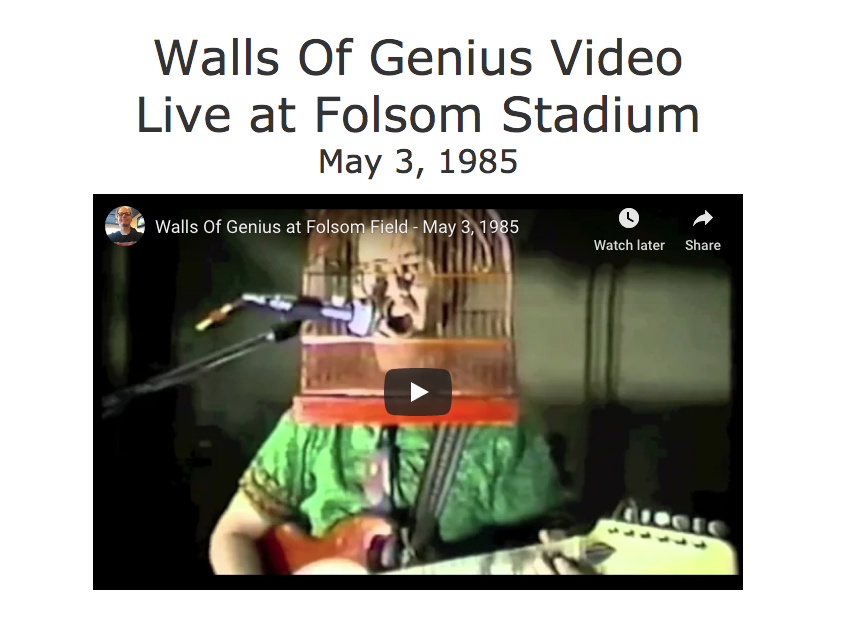
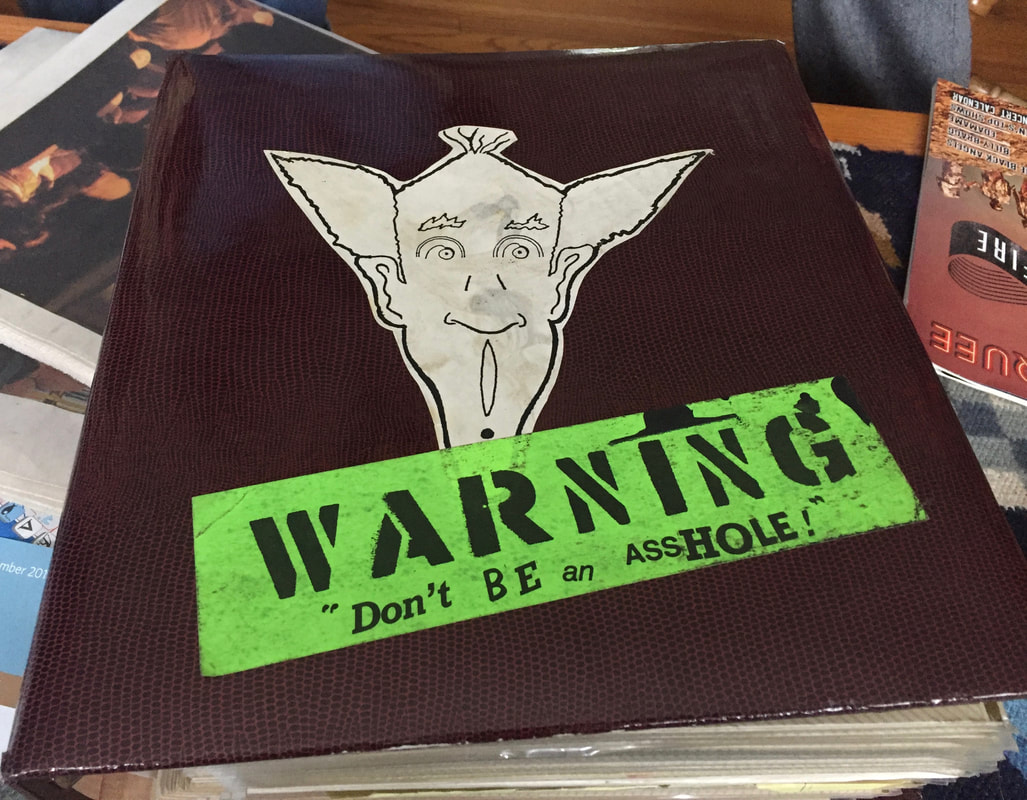
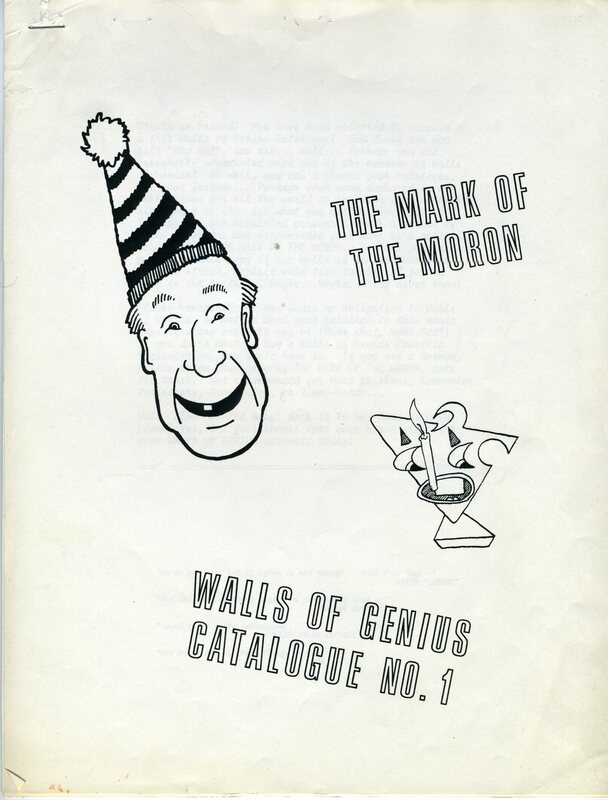
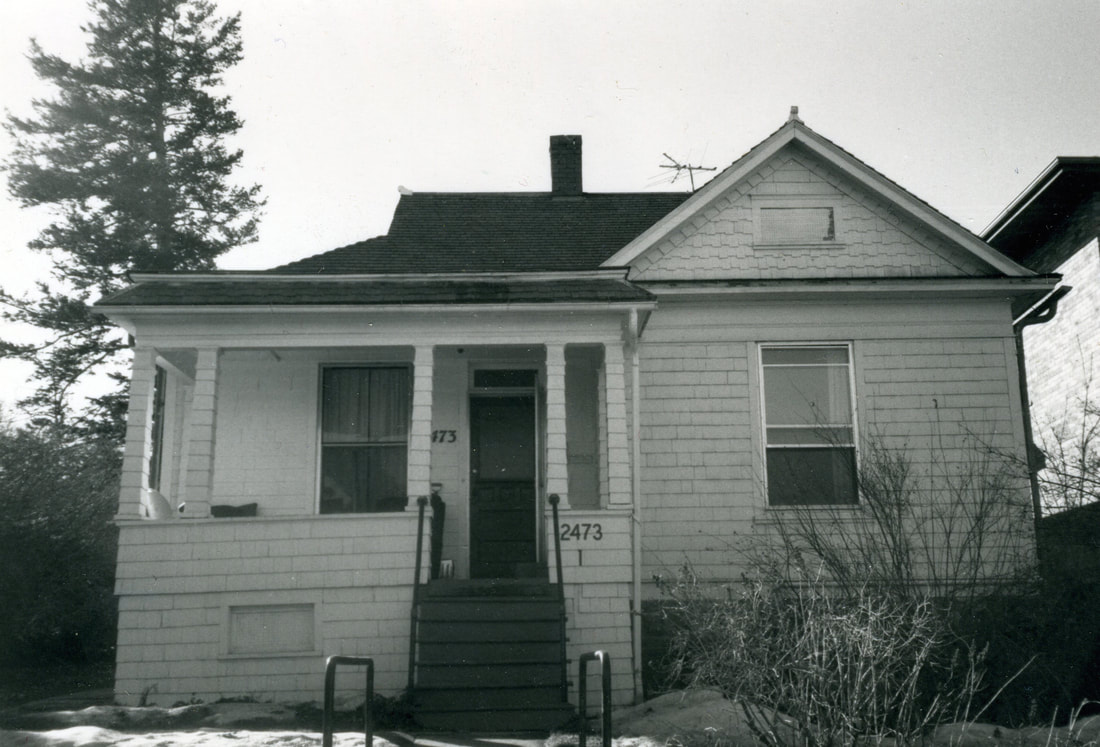
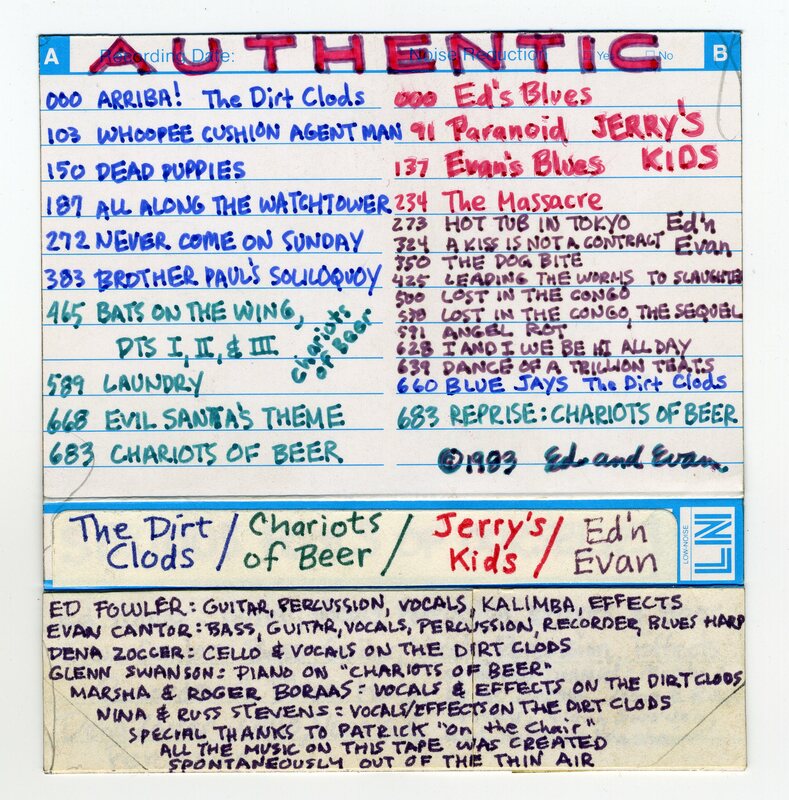


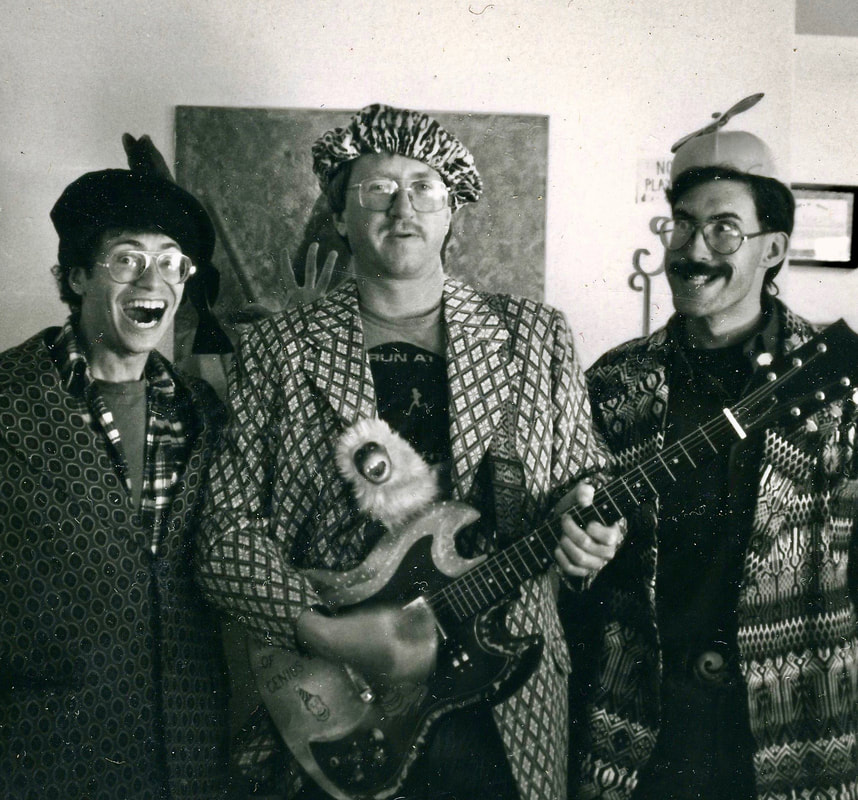
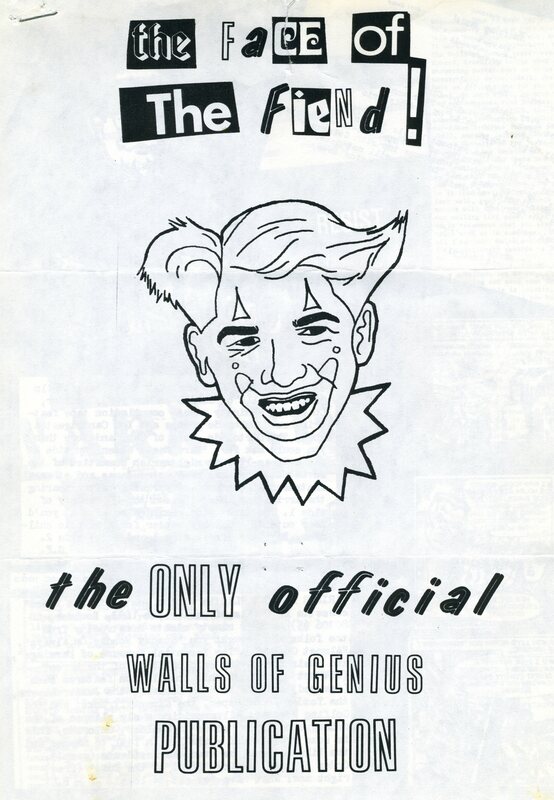
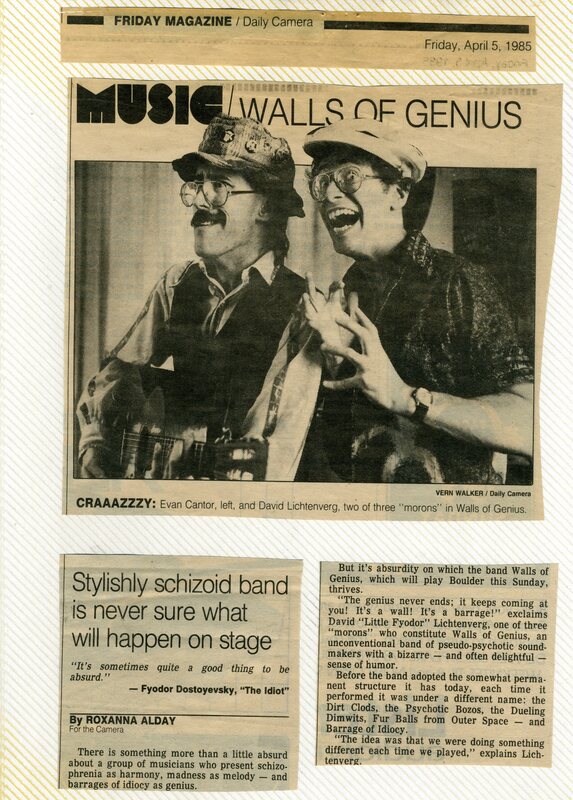
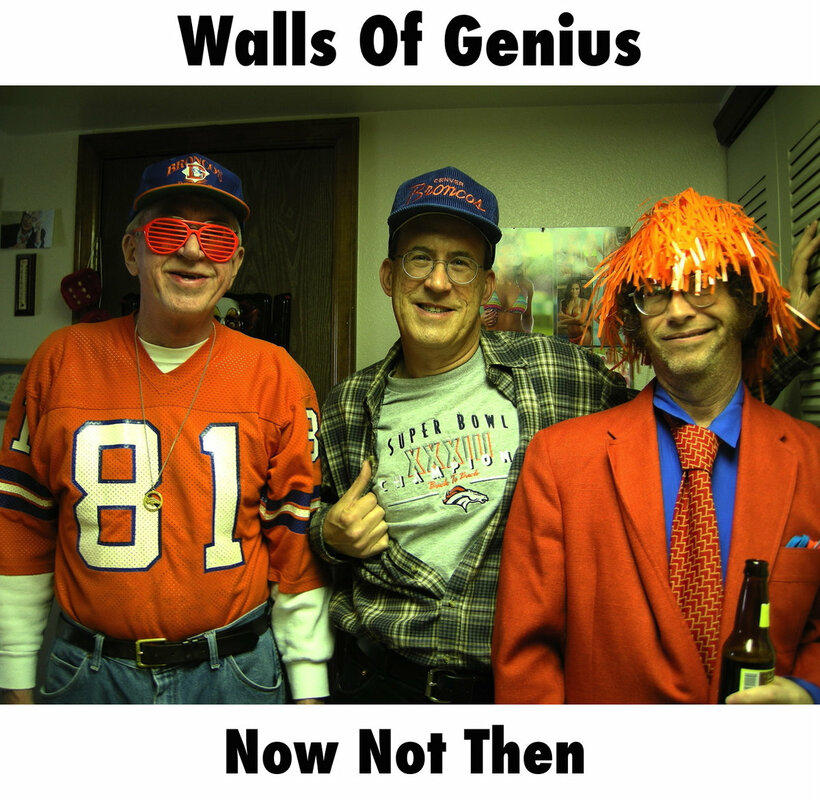

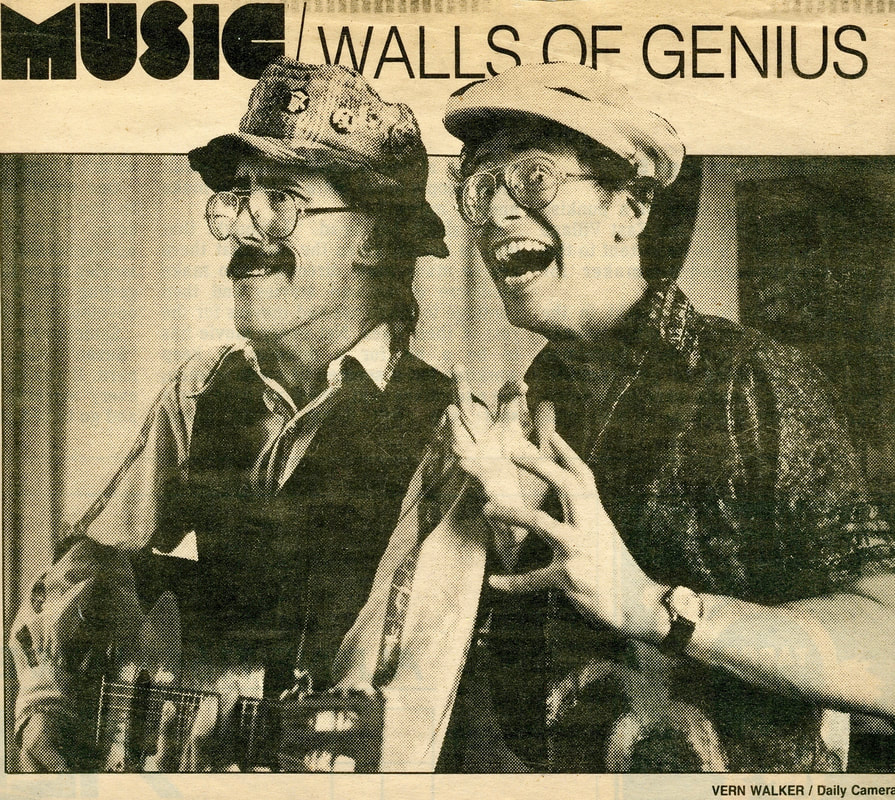
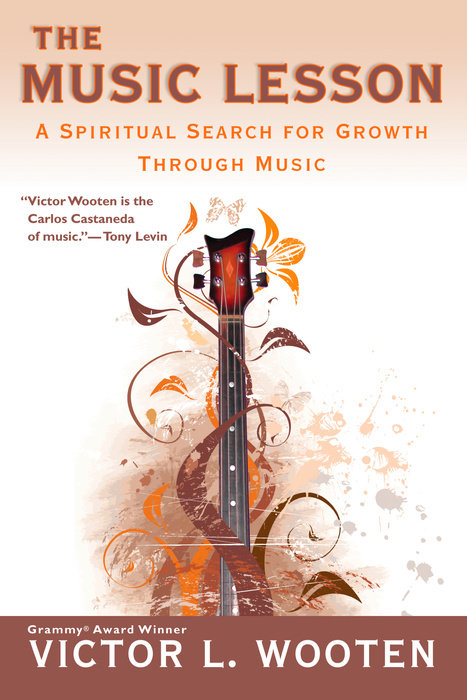



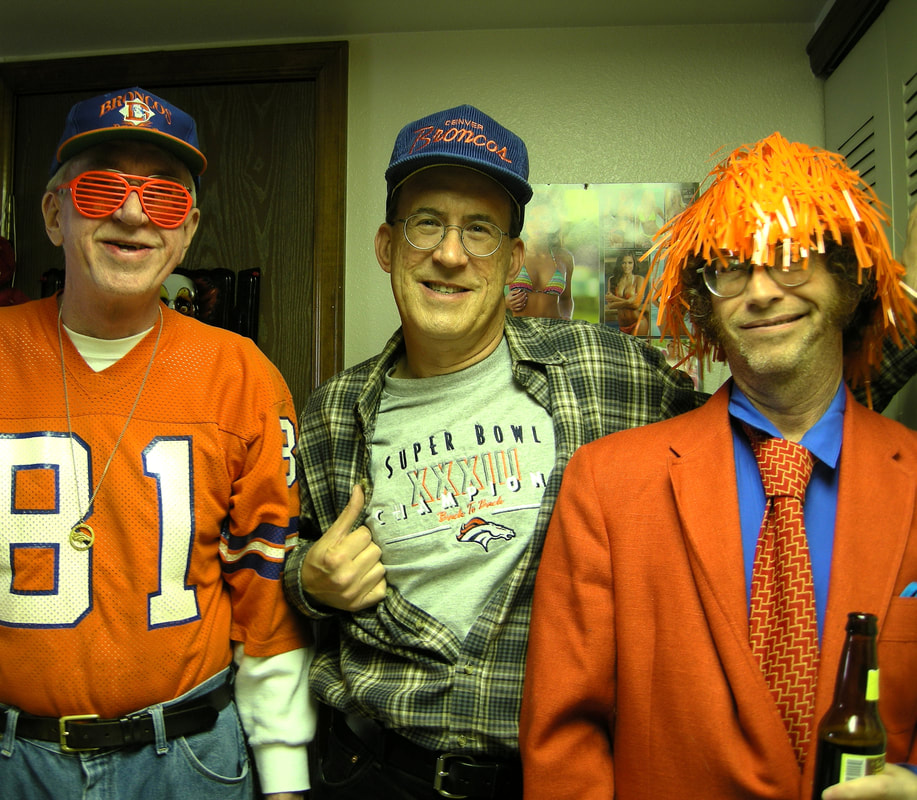
 RSS Feed
RSS Feed